When you look up at the sky, you will find the constellation Libra positioned between Scorpio and Virgo. These constellations are part of the zodiacal circle. Libra also shares its celestial neighborhood with the Wolf, Hydra, Serpent, Centaurus, and the head of the Serpent.
It is interesting to note that Libra is quite visible in the night sky, and it is the 29th largest constellation. In fact, it covers an area of 538 square degrees in the Southern Hemisphere.
The legend of the Libra constellation
In ancient Greece, the Libra constellation was linked to a mythological figure known as Dica, who was the daughter of Zeus and Themis. Dica played a crucial role in upholding law and order, assisting her mother in this task. To ensure fairness, she wore a blindfold, which allowed her to impartially observe the actions of mortals. If Dica came across any deceit or injustice, she would inform her father, who would then administer punishment accordingly. This system helped maintain balance and order in society.
To ensure that mortals would not forget about divine judgment, Zeus decided to immortalize Dica by placing her in the sky alongside her scales. This act gave birth to the Libra constellation. Similarly, in the Roman Empire, Libra was associated with Astrea, the goddess of justice, according to their legends. Regardless of the specific mythology, the stars of Libra symbolize justice, law, and order.
Curious Trivia
As it turns out, there are a total of 83 stars that can be observed within the constellation. However, only 6 of them have a stellar magnitude that exceeds 4 degrees.
What’s fascinating is that the stars that make up Libra were initially considered part of the Scorpius constellation. It was only later on that they were grouped together as a separate entity. Nonetheless, this section was often referred to as the “claws,” as it resembled a similar portion of Scorpio.
At one point, Libra was considered an asterism.
Perhaps because this constellation appeared later in the field of astronomy compared to others, its name was given to an inanimate object. In fact, it is the only zodiac constellation with a non-living name.
By the way, in the realm of astronomy, Libra is also known by its Latin name – Libra.
The primary celestial bodies
The prominent stars in this section create a rectangular shape, which serves as the foundation for the symbol of the Libra constellation.
picture
Alpha is known as the binary star Zuben el Genoubi, while Beta is referred to as Zuben el Shemali. Interestingly, these main luminaries are also commonly known as the South and North Claws.
Gamma is identified as Zuben el Aqrab,
Ipsilon and Theta Libra are classified as orange giants.
The star Brachicum is Sigma, which is also a pulsating object. Furthermore, this red giant represents the hand.
Tau and Delta, in contrast, are considered to be small stars. They both possess a distinctive blue-white color.
Iota, on the other hand, consists of a subgiant and a dwarf.
Furthermore, within the constellation, one can find notable stars like Gliese 570 and 581, 48, 23, and HD 141937.
Interestingly, the constellation Libra is renowned for being the home of the oldest known star in existence. This star, known as Methuselah (HD 140283), has an incredibly long lifespan.
However, it’s worth noting that there are no exceptionally bright stars in this region that have a magnitude higher than the first.
Celestial objects
Despite the absence of objects from Messier’s catalog in this constellation, there are still fascinating elements to discover.
One interesting feature is the presence of the May Lybrids meteor stream, which is actually a complex of meteor streams.
Astronomers have also observed spiral galaxies in Libra, including NGC 5792 and 5885. Additionally, there is a lenticular galaxy, NGC 5890, which features a unique lintel in its structure.
Furthermore, scientists have identified a relatively large globular cluster, NGC 5897, with a magnitude of 9.
The celestial body of Libra visible in the sky
Undeniably, the celestial body of Libra is quite prominent in the sky. It presents a great opportunity for observation in the southern latitudes and central regions of Russia.
Experienced astronomers suggest that the best time to observe Libra is from April until the end of May. During this period, one can witness the most captivating celestial objects within the constellation. However, it is worth noting that the Sun passes through Libra from October 31 to November 22.
The vastness of outer space never fails to captivate individuals, and many children associate astronomy lessons at school with something mysterious and enchanting. One of the most enthralling topics is the exploration of stars. For instance, conducting a research on the Libra constellation provides an opportunity to delve into the legendary tales surrounding this celestial entity, its coordinates, and other intriguing facts. Accompanying the work with a presentation is permitted.
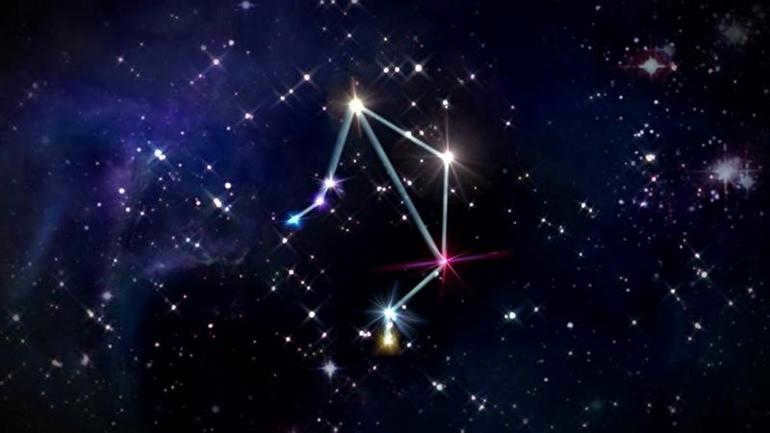
Historical excursion
There are two myths surrounding the constellation Libra. The first one originates from ancient Greece. The ancient Greeks believed in the goddess Astrea, who was the daughter of Zeus and Themis. She was responsible for testing people and determining who was lying or committing crimes. To ensure fairness, Astrea wore a blindfold and used scales to weigh a person’s actions. After the tests, Zeus would punish the guilty accordingly. To show his appreciation for her work, Zeus placed the scales in the sky as a constellation.
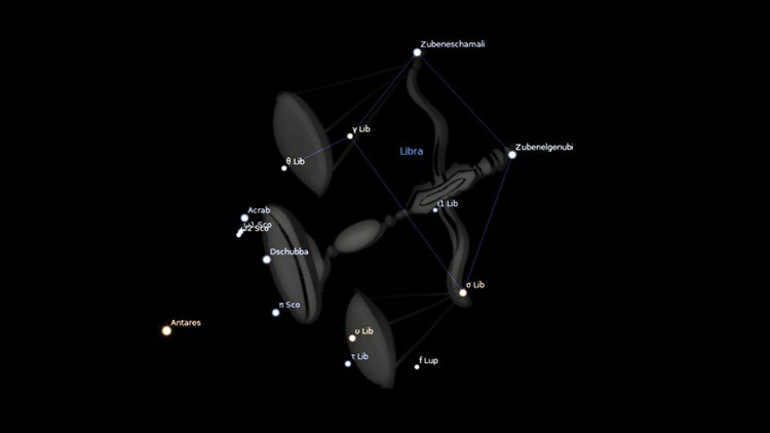
According to an alternate tale, Themis, the offspring of Uranus and Gaea, became Zeus’ second spouse. She bore the goddesses Clotho, Lahesis, and Atropos. Through her influence, the gods adhered to the principles of justice on Mount Olympus. Themis was often depicted wearing a blindfold, symbolizing her impartiality. In one hand, she held a sword to punish wrongdoers, while in the other hand, she held a scale as a symbol of precision and equilibrium. Thus, by Zeus’ command, the scales appeared in the sky as a constellation, serving as a reminder to humanity to uphold justice.
During the time of ancient Rome, Emperor Augustus held sway over the empire. He is fondly remembered by the populace for his just and compassionate rule. His decisions were always equitable, and he consistently upheld the law. To express their gratitude, the people immortalized his name in the form of a constellation.
In ancient Egypt, the introduction of Libra represented the commencement of the first harvest. At times, this symbol was interpreted literally, with the harvest being weighed. Today, it stands among the zodiac signs, unique in its representation as an inanimate object.
Primary features
Libra is the 7th largest constellation in the zodiac. Among all other constellations, it is ranked 29th, and in the Southern Hemisphere, it is ranked 10th. This region is crossed by the celestial equator and ecliptic lines. It is important to note that most of Libra is positioned above the ecliptic line but below the equator, which places it in the Southern part of the sky.
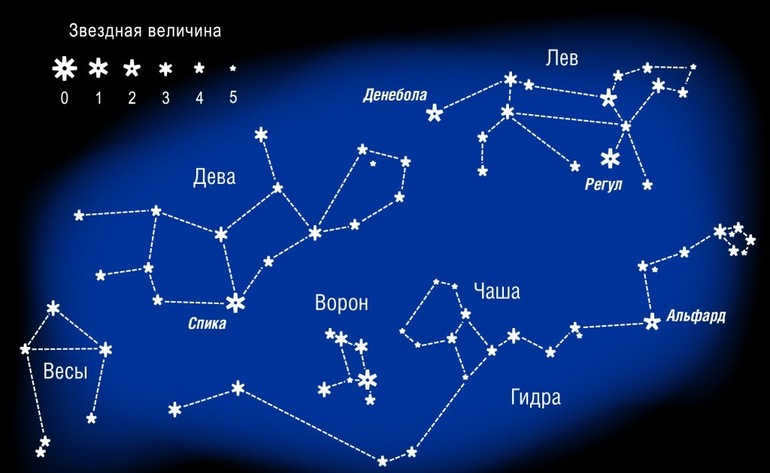

Libra is surrounded by a number of other constellations.
From October 31 to November 22, the Sun passes through Libra. It can be seen in the sky from December to September, but its best visibility is in May, when it reaches its highest point at midnight. This constellation is easily recognizable with the naked eye, and with a small telescope, you can observe it in greater detail. The shape of Libra resembles a triangle with hanging strings. It consists of 83 stars, with 7 being particularly bright and prominent: Zuben Elgenubi, Zuben Elshemali, σ Lib, υ Lib, τ Lib γ Lib, θ Lib.
It’s worth noting that astronomers in ancient civilizations employed slightly different methods for recognizing constellations. Observations made in the subtropical and tropical regions had their own unique characteristics. For example, if someone were in Athens and gazed at the night sky, they would see Libra passing near the zenith, causing the ecliptic line to be almost perpendicular to the horizon. As a result, the constellation’s appearance would be slightly altered, resembling more of a carousel or a pendulum swing.
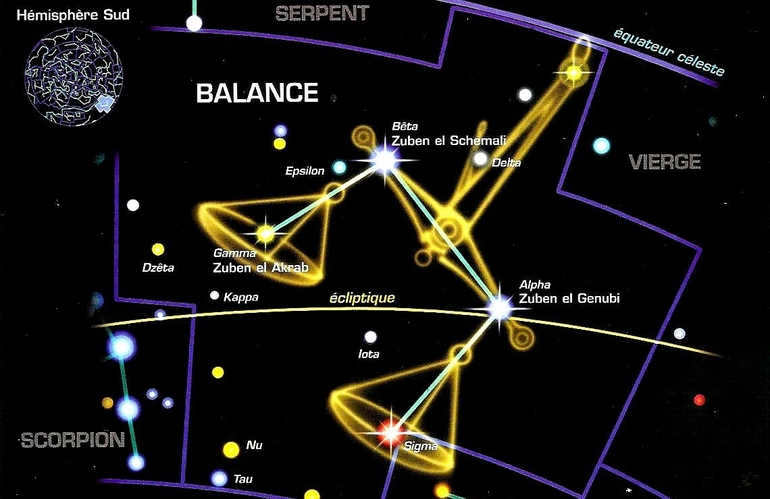
The perception of the zodiac signs has evolved over time. During the era of Ptolemy, all signs were believed to possess life, yet Libra did not have its own distinct constellation and instead shared segments of Scorpio and Virgo.
Shining stars
The source of different planets and other celestial bodies is wrapped in enigma. Thorough examination of this domain became feasible only subsequent to the advent of potent telescopes. Because of them, several gleaming stars were recognized in the constellation of Libra. The most substantial among them are:
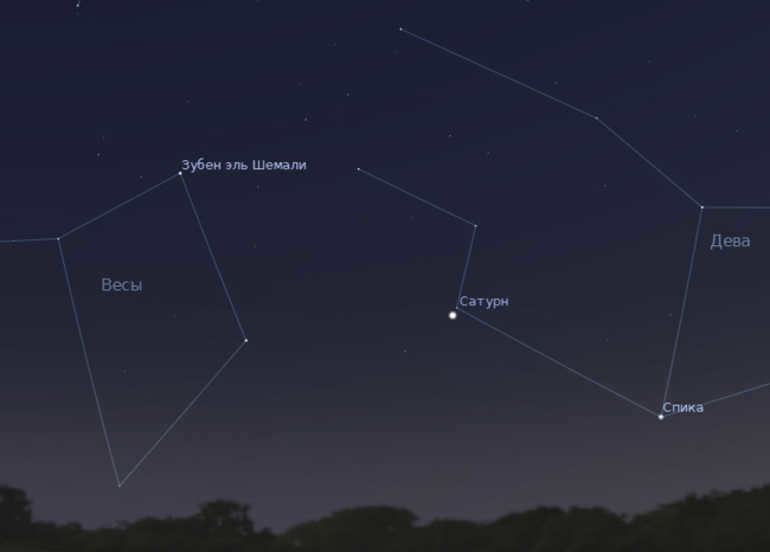
- Zuben Elshemali is a dwarf star that emits a blue-white light. Its temperature on the surface is estimated to be around 11,000 Kelvin. There are indications suggesting that it may have a satellite orbiting around it, although it remains unseen from Earth.
- Zuben Elgenuby, on the other hand, is a complex multiple star system. Each component of this system is located at a significant distance from one another. Alpha 2 Libra, for instance, has a companion star with a yellowish hue. The surface temperature of this companion star is estimated to be around 8500 Kelvin.
- Astronomers have classified Zubnalgubi as a pulsating variable star. It is often referred to as the red giant M4III. Through careful observations, scientists have determined that Zubnalgubi is currently in the final stage of its evolution.
The constellation also includes a star cluster and a galaxy. If you wish, you can detect them using a beginner’s telescope. It’s possible that the first attempt may yield no results, but there’s no need to worry, as experience will bring an understanding of the location of each star.
Constellations vary. They can be observed throughout the year, but it’s important to note that their visibility may vary at different times.
Methods for Locating
Merely knowing the coordinates and star count of the constellation Libra is insufficient. To locate this celestial entity, a few guidelines must be followed. First and foremost, it is important to understand that in mid latitudes, the constellation does not rise very high above the horizon. The three prominent stars of Libra – blue, white, and orange – can be identified by neighboring constellations, although this approach is only suitable for experienced observers.
A universal method for determining the location entails approaching from the north. To do this, one must identify the position of the Big or Little Dipper. From the pair Benetnash-Mitsar (the handle of the bucket), mentally draw a straight line to the southeast. If successful, Zuben Elshemali, which is part of Libra, will come into view.

The constellation can also be located using the moon, as it passes through it once a month. It is best to search for the constellation before or after the moon’s passage, as the moon’s light can make it difficult to see.
Another method is to locate the constellation Volopassus, which resembles the shape of a parachute. Start at the right corner, called Seguin, and draw a line to the left sling. You will come across a bright point called Izar. From there, descend southward to the star Zuben Elshemali.
Experienced observers will easily spot a bright point in the lower left part of the sky – Antares. By looking above and to the right of Antares, you will find a rhomboid shape formed by four stars. This is the constellation Libra.
Helpful Details
Alongside the report, it might be beneficial to include a presentation that features an illustration of the constellation and an elaborate explanation of the stars. Visual content is more easily retained and piques curiosity.
You have the option to incorporate fascinating trivia about the Libra constellation:
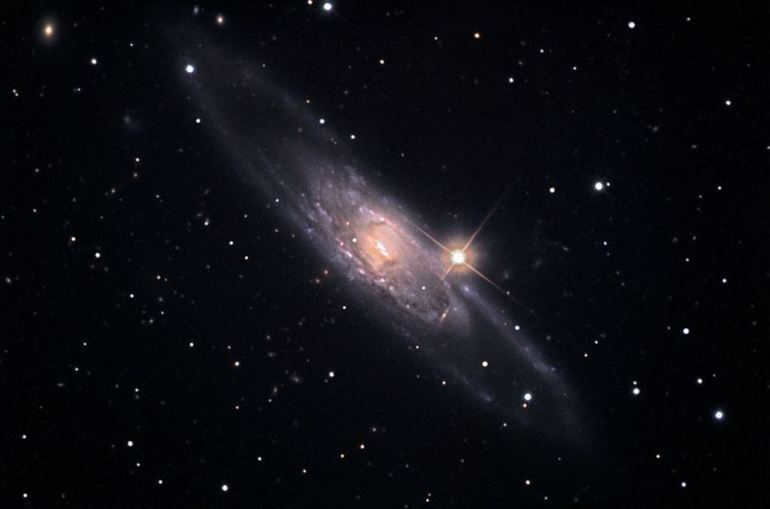

- Originally, Libra was part of Scorpius constellation and occupied its claw.
- At one point, Libra was considered as an asterism, a group of stars that is pleasant to observe and has a well-established name.
- Among the zodiac signs, Libra is the only inanimate object.
- The constellation is known as Libra in Latin.
In addition, you can share myths and legends, organize a quiz on the topic, or create a project. Employing non-traditional methods can make the learning process engaging and contemporary. If desired, you can incorporate short videos that provide useful information on the subject. After all, it’s important to give children the opportunity to express their creativity.
The constellation of Libra consists of 83 stars, which are easily visible without any special equipment. Libra is situated in close proximity to Scorpio and Virgo. It is located in the Southern Hemisphere.
According to the treatises of ancient scientists, Libra emerged as a separate constellation relatively late, specifically in the 2nd century BC. Previously, some of the stars in Libra were associated with Scorpius. The ancient Egyptians drew a parallel between Libra and agricultural labor. After the crops were harvested, it was necessary to weigh them. Libra served as a reminder to farmers that it was time to harvest and weigh the crops.
The four brilliant stars of Libra form a rectangular shape in the sky. The straight line that represents balance is formed by alpha and beta, while sigma and gamma create the scales themselves.
Zuben el Genoubi is the dominant star in the Libra constellation, being the second most luminous star. Its distance from Earth is approximately 77 light years.
Within this constellation lies the oldest star in the Universe, which emerged during the time of the Big Bang. However, determining its exact time of appearance has proven impossible. This ancient star, known as Methuselah, is positioned 190 light years away from Earth.
While there are no incredibly bright galaxies within this constellation, astronomers have discovered one that piques their interest. The spiral galaxy NGC 5885 is situated farther from the beta star of Libra and can only be observed using a powerful telescope.
Additionally, the first exoplanet ever observed, Gliese 581c, resides within the boundaries of Libra. It orbits around the red dwarf star Gliese 581, which exerts the strongest gravitational pull on the exoplanet.
Libra is situated in a region spanning 530 square degrees, making it visible in parts of Russia like the southern and central regions. Astronomers suggest that the optimal time to observe this constellation is during the middle of spring.
Individuals born under the Libra zodiac sign fall between September 24 and October 23. They are known for their perpetual pursuit of better options, which often leads to indecisiveness. Libras have a tendency to thoroughly evaluate and consider all aspects of their lives, not just their own. With their myriad perspectives on the same issue, they can often exasperate their loved ones. This makes them challenging partners in both romantic and business relationships.
Flirting is something that Libras, regardless of gender, thoroughly enjoy. Those born under this sign are prone to jealousy, though they have no qualms about displaying affection publicly.
The ideal partners for Libra are individuals who were born under the fire sign, as well as those who share the same zodiac sign, Libra.
The Libra Constellation
Fascinating Responses
Ernest Hemingway, a renowned 20th-century writer, has been honored with numerous literary prizes and awards. He was born on July 21, 1899, in the small provincial town of Oak Park.
Russian history is abundant in a wide range of events. It is also filled with biographies of individuals who have written about the history of our nation. One such individual is Nikolai Mikhailovich Karamzin, a well-known Russian writer.
Lermontov conceived his poem at the tender age of 14 and continued to work on it throughout his life, making significant additions and fundamental changes not only to the poem’s wording, but also to its concept and storyline.
The exact origin of man on earth remains a mystery, with various theories and explanations proposed.
Throughout history, St. Petersburg has consistently held the reputation of being a remarkable, dazzling, and occasionally enigmatic city. Despite enduring coups, revolutions, and devastating destruction, St. Petersburg remains the most exquisite city in the world.

Centuries ago, humans acquired the knowledge of weighing different objects. During that time, the tools used for measuring weight were relatively basic. However, records from the ancient Egyptian Book of the Dead illustrate how the deity Anubis would weigh the hearts of the deceased on the Scales of Truth.


Ancient Scale Varieties
Scales were utilized for trade purposes, as well as to distinguish between real and counterfeit gems. The initial devices resembled a lever with suspended bowls on both sides. The central part was secured by a rope, and cereal grains were used as a standard of measurement. Later on, movable weights were introduced, but even so, the accuracy of measurements remained low. Additionally, weighing heavy objects posed an extreme challenge.

Instead of relying on natural standards, people started using weights. These weights took the form of special plates with a rectangular shape, pieces made of lead or bronze in various polyhedral shapes, washers, and balls. What’s fascinating is that these weights often featured depictions of emperors, gods, animals, and even female silhouettes. It’s worth noting that cheating during the act of weighing in this era was seen as a serious offense.
New inventions
In the 12th century, there was a groundbreaking invention of scales with a remarkable accuracy of 0.1%. According to the records of the renowned Arab mathematician, physicist, and mechanic Al-Khzazini, these ingenious contraptions enabled the determination of substance density and even the identification of alloy composition. To achieve this, the scales were equipped with five bowls.
In the 16th century, the brilliant mind of Galileo Galilei revolutionized the field of weighing by inventing the hydrostatic scale, which allowed for the measurement of objects in liquids. Subsequently, in the 17th century, the French scientist Gilles de Roberval introduced platform scales by ingeniously placing a beam-arm underneath, creating a platform. Despite its ingenuity, this invention remained relatively unnoticed for quite some time.


The situation took a turn in 1850 when J. Beranger, another French scientist, made some modifications to the design. He eliminated unnecessary levers, resulting in increased sensitivity of the device.
While some scientists were focused on enhancing platform scales, others were developing a new type of device – spring scales. The first of its kind was created by K. Weigel, a German scientist, who successfully achieved high accuracy in weighing and compactness in the scales themselves.
During that era, a wide range of scales were invented:
Since the 18th century, there have been automatic scales that do not require any movement of weights. When an object is placed on the bowl of such a device, its weight is immediately displayed.
The Use of Scales in Russia


Various Types of Weighing Scales
With the advancements in science and industry, the need for transportation capable of carrying heavy loads arose. However, the weight of these loads had to be measured accurately. To fulfill this requirement, decimal scales called Quintenza were invented in 1818, followed by the creation of hundred scales called Ferbanks in 1831. The concept behind decimal scales is that weights are balanced using weights that are 10 times lighter than the object being weighed.

During the early 20th century, a new invention emerged – the continuous weight measurement device, also known as batching and conveyor scales. It was quickly realized that it was more efficient to weigh cargo directly on the transport, leading to the development of automobile and wagon scales. In industries such as pharmaceuticals, jewelry, and scientific research, specialized ultra-precise devices were introduced. In fact, there is now even a device capable of accurately determining the weight of a DNA molecule, although it was only invented in 2005.
Varieties of contemporary devices
Throughout the course of several millennia, humanity has successfully developed a plethora of mechanisms designed for weighing objects. Presently, there exists an extensive array of scale varieties, each possessing distinct characteristics:
- According to purpose – commercial and laboratory, platform and automotive, technical and dispenser devices;
- Based on measurement quality – specialized, highly accurate, and moderately accurate;
- Categorized by installation method – stationary and portable, floor-mounted and tabletop;
- Differentiated by balancing device type – mechanical, electronic, and electromechanical.
In the case of the latter, weight measurement is conducted utilizing electronic components, yet the operational algorithm of these scales remains identical to that of mechanical scales.
The functioning principle of electronic scales
Electronic scales are known for their precision in weighing and their compact size. These devices are equipped with a display that shows the weighing results. Initially, the way they worked was by processing the vibrations of the measuring spring through the electronic circuitry. Some models still use this algorithm today.


Another option is to use scales with two metal disks that function as a capacitor. When an object is placed on the scale, one disk moves, increasing the distance between it and the second disk, which causes a change in the capacitance of the capacitor. An electronic device detects these changes and converts them into a digital weight value.
There is an alternative choice available – utilizing a thin conductor as a voltage sensor. Given that fat, water, bone tissue, and muscle mass have distinct electrical conductivity properties, this particular type of scales has the capability to assess the proportion of these elements within the body. These devices are commonly recognized as diagnostic scales.

Functions and Benefits
There are numerous benefits to modern scales. One of the key advantages is the wide range of colors and designs available. Whether you prefer a model in your favorite shade, a classic black or white design, or a floor scale adorned with a beautiful image, you can easily find the perfect fit for your preferences.


Another great advantage of these devices is their impressive functionality. Nowadays, scales are not just limited to displaying your weight. They can also provide you with information about the composition of your body, such as the percentage of bone tissue, muscle mass, body fluid, and fat mass. Additionally, they can calculate your body mass index and determine your basic metabolism and metabolism rate based on your level of physical activity.
Furthermore, some models are equipped with the ability to synchronize with the Beurer HealthManager app. This allows the scales to transmit your data wirelessly via Bluetooth® to your computer or smartphone, making it convenient for you to track and monitor your progress.


The app interface has a separate section for tracking weight readings. This section stores information about your measurements during a chosen period. The data can be organized, presented in a diary format with dates, or displayed as a graph. This feature allows you to analyze when your body weight increased or decreased, the impact of long-term exercise on body composition, and the changes that occurred with different diets.
Nowadays, scales serve a purpose beyond merely measuring body weight. They have evolved into a dependable tool for developing personalized diets, managing weight loss, and calculating optimal exercise regimens. Additionally, their attractive designs make them a stylish addition to any interior.

Throughout history, individuals have strived to develop precise and space-efficient measuring tools. After countless centuries, this challenge was eventually conquered. Presently, there exists an enormous variety of devices designed for determining body weight and weighing various items.
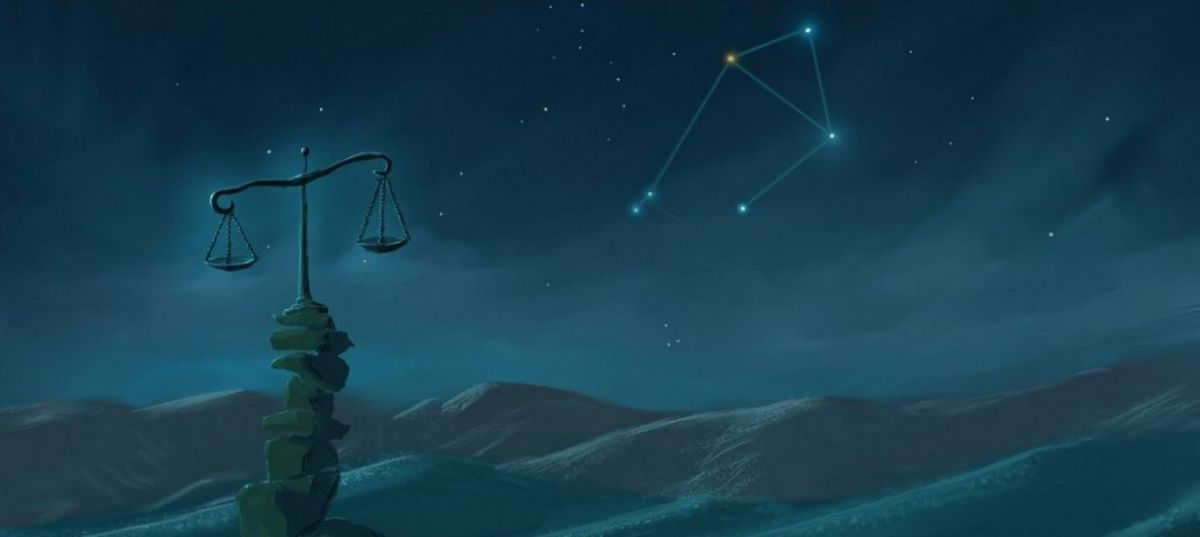
Libra is an additional segment of the celestial sphere that forms part of the zodiacal belt. Unlike the other constellations, Libra’s name does not represent a specific living creature. It covers a significant area of 538 square degrees and is adjacent to the constellations of Virgo, Scorpio, Hydra, Serpens, and various others.
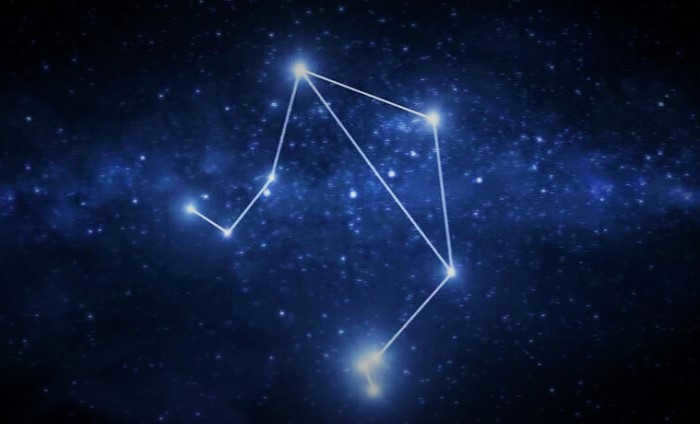
The constellation of Libra
Myths and Legends
The constellation of Libra is linked to the ancient Greek goddess of justice, Dike (also known as Astrea), who was the daughter of Zeus, the god of thunder, and Themis, a Titaness and the embodiment of justice. Dike was often portrayed wearing a blindfold, symbolizing her impartiality – she did not discriminate between individuals. Whenever Dike came across a wrongdoing, she would report it to Zeus, who would take it upon himself to punish the guilty. This system ensured order and equilibrium, which is represented by the scales held by the goddess. Zeus immortalized Dike in the sky along with her scales to serve as a reminder that justice will always prevail.
In the ancient mythology of Rome, Justitia, the goddess of justice, was the equivalent of Dike. Like Dike, she was often portrayed holding scales in her hand, but with her eyes open. Regardless, in nearly every tale, this constellation represented justice, order, and equilibrium.

Goddess Dike
Interesting facts
- The Libra constellation consists of 83 stars, but only 6 of them have a brightness greater than the fourth magnitude, so not all of them are visible.
- Originally, Libra was a part of the Scorpius constellation, forming its claws. It was then mentioned in some sources as an asterism and only became an independent constellation after the beginning of our era.
- The reason why Libra is the only “inanimate” constellation in the zodiac circle is unknown. It is likely that it was not recognized as an independent constellation for a long time.
Alpha Libra does not hold the title of the most luminous star in the constellation, as it occupies the second position. This celestial object is actually a binary system, composed of a massive blue giant and its companion. Interestingly, it is known by two distinct names. The first designation, Zuben el Genubi, translates to “southern claw” and was assigned to the star during the time it was part of the Scorpius constellation. However, this appellation continues to be used today. The second name, Kiffa Australis, signifies “southern bowl” and alludes to the scales’ receptacle.
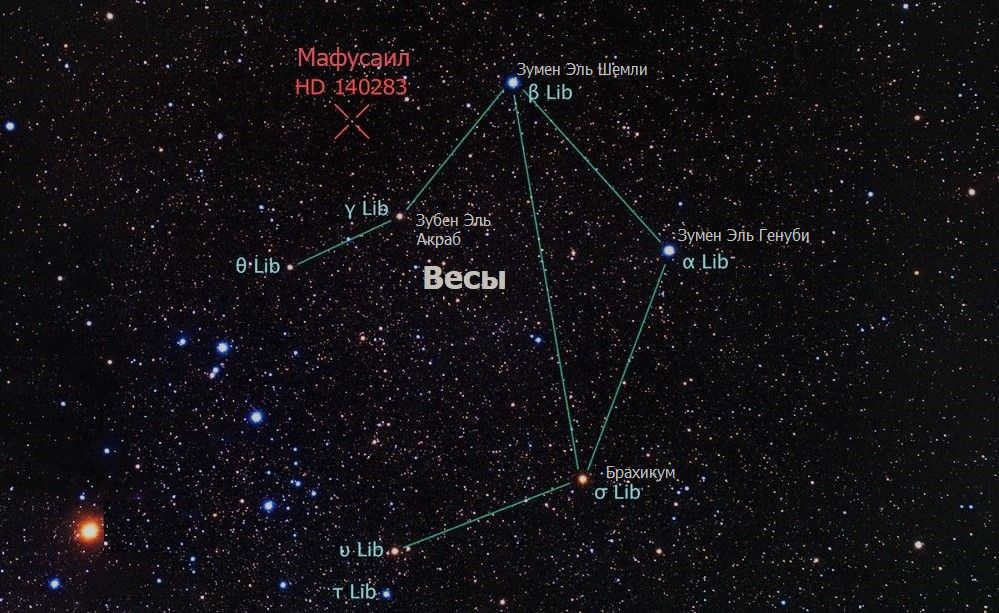
Constellation Libra: A Closer Look at the Stars
The most prominent star in the constellation Libra is Beta Libra. It is also known by two other names, Zuben el Shemali and Kiffa Borealis, which mean “northern claw” and “northern bowl” respectively. This blue-white star appears to have a greenish tint when observed without a telescope.
Many stars in the Libra constellation have multiple names. Sigma, for instance, goes by Brachium, Cornu, and Zuben-Hakrabi.
Unlike its counterparts, Ipsilon of Libra has not been assigned a distinct name. It is identified as HD 139063 and is an orange giant that dates back more than three billion years.
Tau, another star in Libra, shares its name with Alphaeus. It is referred to as Derakrab Australis, which translates to “southern claw” in Arabic.
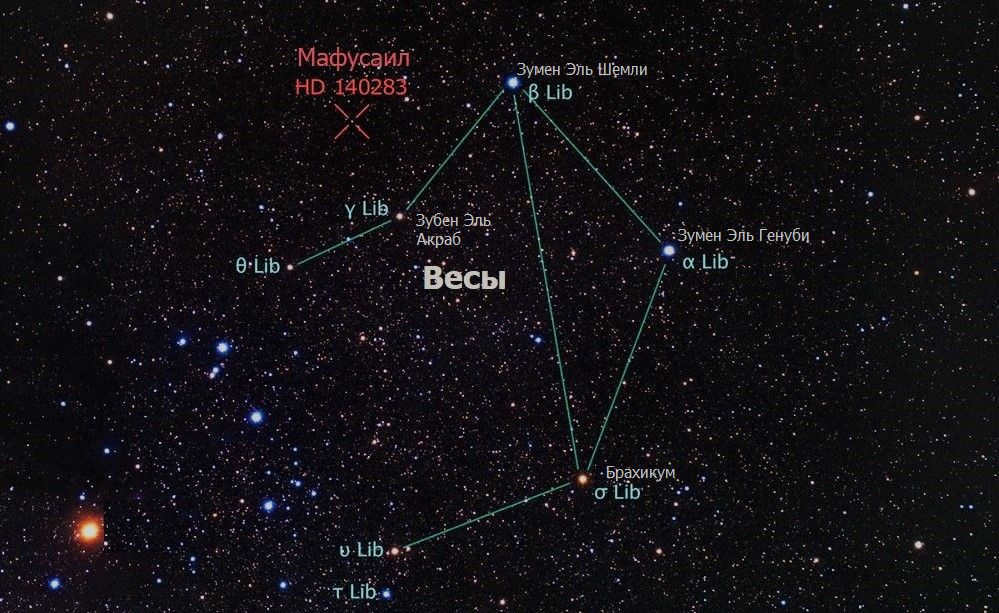
HD 140283 (Methuselah) located in the Libra constellation
The gamma star in Libra is called Zuben el Aqrab. This is another star in the Libra constellation that has the word “claw” in its name, which refers to Scorpius. There is a possibility that Gamma is a binary or even a trinary star system, but various researchers still have conflicting opinions on this matter.
Additional items
Libra comprises 83 stars and lacks any item in Messier’s index. Nevertheless, there are several captivating items in this constellation. For instance, the May Librids, an entire assemblage of meteor streams. Additionally, Libra is the abode of spiral and lenticular galaxies, as well as a solitary globular star cluster.
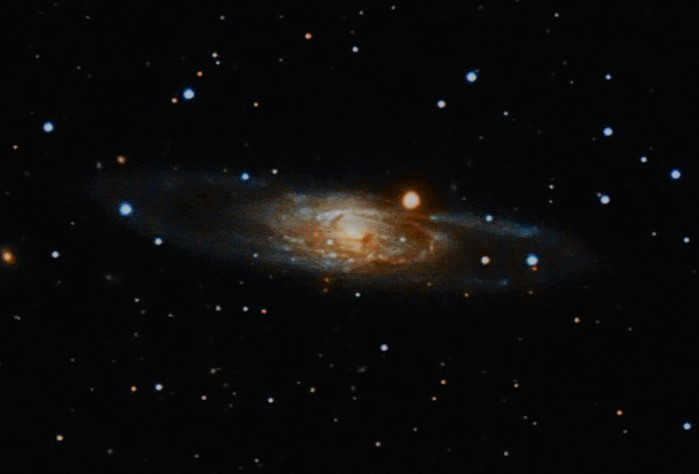
NGC 5792
Observation
The Libra constellation is easily visible in the night sky. It is particularly prominent in the southern regions of the Russian Federation and some parts of its central area during the months of April to May. It is recommended to observe this constellation in latitudes ranging from +61 to -90 degrees. However, it is important to note that the Libra constellation cannot be seen from October 31 to November 22 due to the Sun’s interference.
Libra is a constellation located between Scorpio and Virgo. It consists of 83 stars that can be seen with the naked eye. Despite the fact that only six of its stars are brighter than the 4th magnitude, the constellation Libra is one of the most prominent constellations in the Zodiac.
This constellation did not always exist and only appeared in the 2nd century BC. Prior to that, its stars were part of the Scorpius constellation, forming the shape of claws. This figure was known as the “Claws”. However, since this part of the sky was associated with the sign of Libra in the Zodiac, it began to be referred to as Libra around the 1st century BC. The brightest stars in the Libra constellation, alpha and beta, are still known as the South and North Pinches.
Signaling
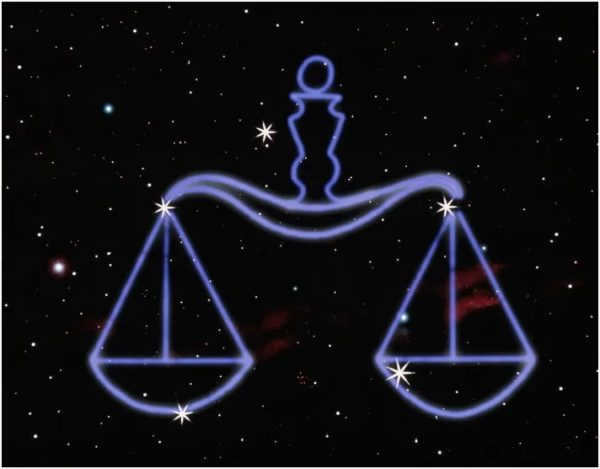
Since 1962, scientists from Earth have been sending radio and laser signals towards the constellation Libra in search of potentially habitable exoplanets. This effort has been made four times, specifically in the years 1962, 1966, 2008, and 2009. It is worth noting that three out of the four attempts were led by astrophysicists from the former Soviet Union and Russia.
The primary celestial bodies in the star pattern of Libra
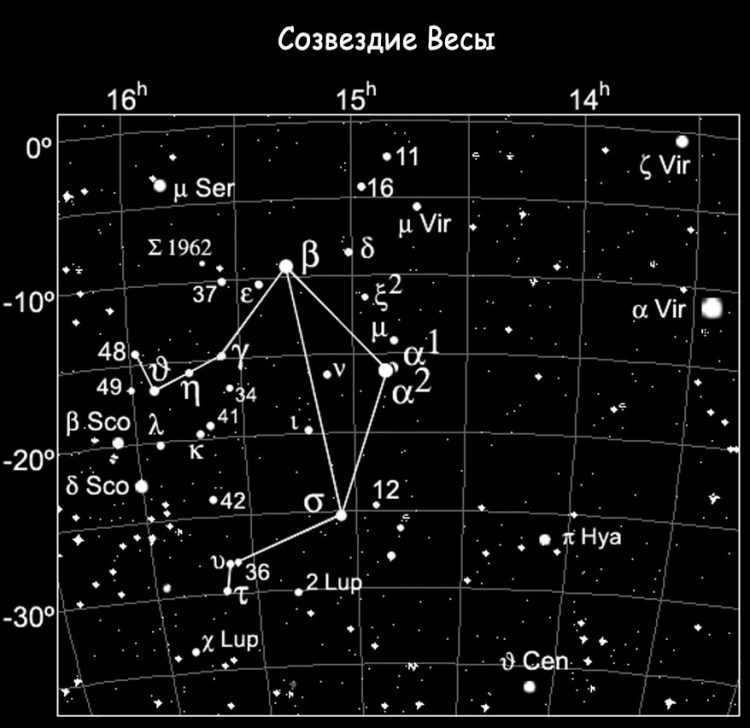
Beta Libra
Beta Libra is a blue-white dwarf (B8 V) that has an apparent visual magnitude of 2.61, making it the brightest star in the constellation. It is located at a distance of 185 light-years from Earth. Beta Libra is known for its rapid rotation, spinning at a speed of 250 km/s. It has a radius that is 4.9 times larger than the Sun’s and is 130 times brighter.
One interesting feature of Beta Libra is its small periodic variations in luminosity, which are measured to be 0.03 magnitude. This suggests the presence of a companion star orbiting Beta Libra.
Libra Alpha
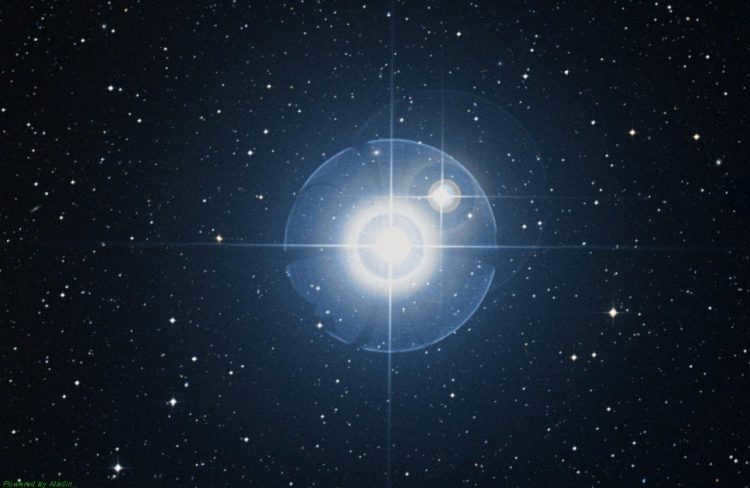
A binary star system, in which the two brightest objects form a double star and move together through space. It may be associated with the moving Castor group, which originated approximately 200 million years ago. This system is located close to the ecliptic and may intersect with the Moon and planets. On November 10, 2052, it will be obscured by Mercury. It is the second most luminous star in the constellation.
Alpha-1 Libra is composed of two components, with a combined visual magnitude of 5.153 and a distance of 74.9 light-years. It is a spectroscopic binary system (F4) with a rotation period of 5870 days. The two objects in this system are separated by 0.383 arc seconds (10 astronomical units).
The star KU Libra could potentially be the fifth element, separated by a distance of 2.6 degrees. It is moving in the same trajectory and is in close proximity to establish a gravitational bond with the surrounding stars.
The Arabic translation of the name “Zuben Elgenubi” indicates “southern claw,” while its Latin counterpart “Kiffa Australis” refers to “southern bowl.”
Brachium (Sigma Libra).
Reword the text, making it unique, using the English language and preserving the HTML markup:
Brachium (Sigma Libra).
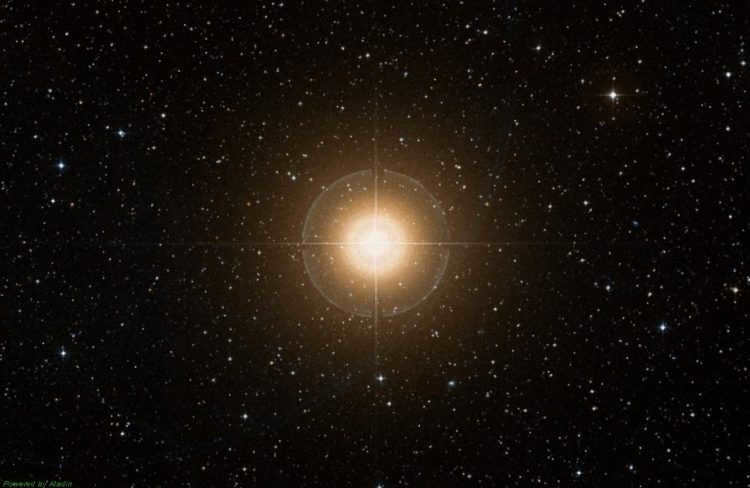
Sigma Libra is a pulsating star with variable brightness, measuring approximately 3.29m on the stellar magnitude scale. It belongs to the spectral class M3, suggesting that it is likely a red giant in its evolutionary stage. Situated at a distance of 290 light-years from Earth, this star possesses an average luminosity that is 1900 times greater than that of the Sun, and its radius is 110 times larger. With a surface temperature of approximately 3600 K, Sigma Libra exhibits a reddish hue.
It’s intriguing to note that Libra sigma is a pulsating star. As a result, its luminosity fluctuates every 20 days with an average change of 0.26m. This celestial body is currently in the advanced phase of its stellar life cycle. Extensive research has been conducted on all aspects of this star, confirming that Sigma doesn’t have any undiscovered companions, chemical composition anomalies, or nearby dust disks. In the near future, the star will expand in size, shed its outer layers, and reveal its carbon and oxygen core, ultimately transforming into a white dwarf.
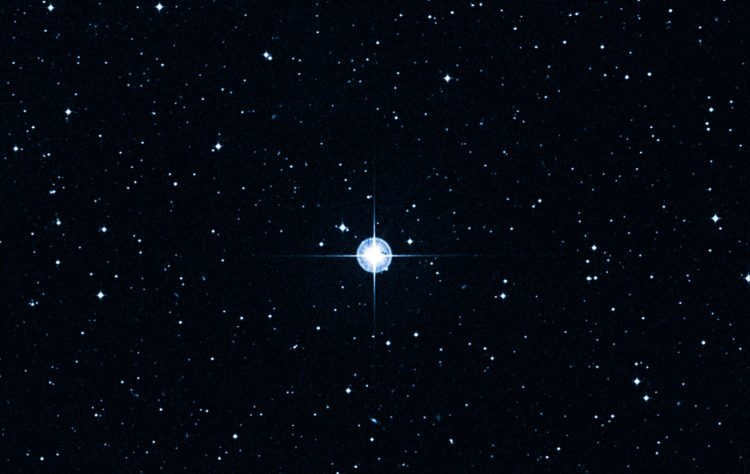
A subgiant star, believed to be the oldest in the entire Universe, was formed shortly after the Big Bang. It has an apparent visual magnitude of 7.223 and is located at a distance of 190.1 light-years. Despite having a low metal content, this star contains significant amounts of hydrogen and helium, with the iron content being less than 1%. The age of this star is estimated to be approximately 14.46 billion years, while the age of the Universe is believed to be 13.77 billion years. These figures are not in conflict with each other as they are only approximations and cannot be calculated with absolute precision.
The age of the star HD 140283 has been determined by the Hubble telescope to be around 14.5 billion years, with a margin of error of +/- 800 million years. This star moves quickly through the local stellar neighborhood, as its orbit takes it across the plane of our galaxy. It originates from a galactic halo that is home to ancient stars. The Schmidt telescope has captured images of this star in blue light.
Ipsilon of Libra
Ipsilon of Libra is a multiple star system that consists of an orange giant (K3III) and has an apparent visual magnitude of 3.60. This celestial object is situated at a distance of 195 light-years from Earth.
Tau of Libra
Tau of Libra is a blue-white dwarf (B2.5V) with an apparent visual magnitude of 3.66. It is located approximately 445 light-years away from our planet and has a size equivalent to 3.2 times that of the Sun.
Libra Gamma
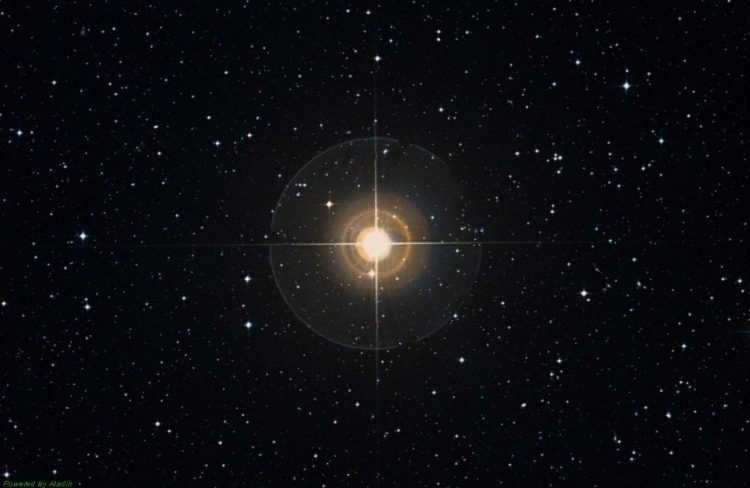
The Zuben el Aqrab star is an orange giant (K0 III) located at a distance of 152 light years. It has an apparent magnitude of 3.91 and a diameter equivalent to 14 solar radii. With an apparent stellar magnitude of 3.93m, it shines 71 times brighter than the Sun. The name “Zuben el Aqrab” comes from Arabic and means “scorpion’s claw”.
This star, known for its gamma ray emissions, has a metallicity that is half that of the Sun. It has a mass of 2.5 solar masses and is estimated to be around four billion years old. Additionally, a potential companion has been observed in close proximity to the Zuben el Aqrab star, less than 0.1 arc second away. This companion has a stellar magnitude of 4.2m and belongs to the G8III spectral class. It is also speculated to be a double star in its own right.
Orange Giant (K0 III) has a visual magnitude of 4.136 and is located 163 light-years away. It is 84% more massive than the Sun and 35 times brighter.
Iota Libra
The Iota Libra system (B9IVpSi) has an apparent visual magnitude of 4.54. It consists of two pairs: Iota-1, a subgiant (B9) and a dwarf star located 377 light-years away, and Iota-2, a dwarf (A3) located 240 light-years away from the Sun.
The Iota-1 objects have an orbital period of 23.469 years and are separated by 0.13 arc seconds. Their combined mass is 6.05 times that of the Sun, and they are 149 and 94 times larger in size. Additionally, there are two more dwarfs (G) in this system with magnitudes of 10 and 11.
Libra’s Delta
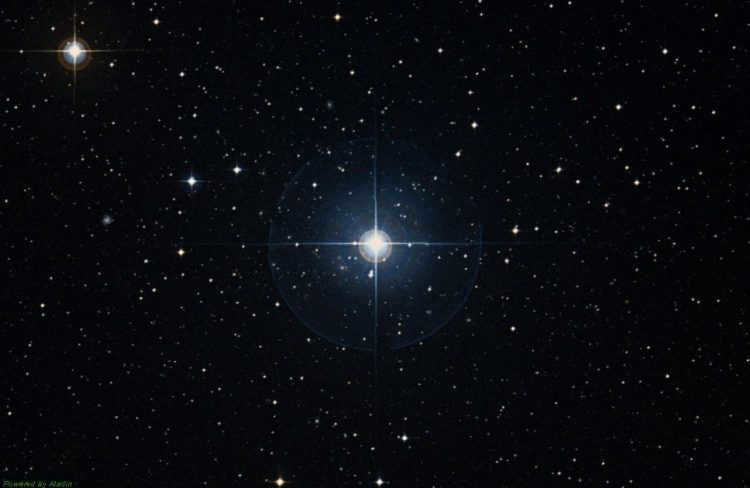
Delta is an intriguing object in the Libra constellation. It is also known as Zuben Elakribi. This alternative name suggests that it was once part of the nearby Scorpius constellation, like many other elements of Libra. Delta Libra is a multiple system and an impressive example of eclipsing variable stars, specifically of the Algol type.
Browsing through the variable stars catalog, we can observe that the primary component of this system is a white hot star, classified as A0 based on its spectrum. The secondary component, on the other hand, is an orange subgiant. The two stars in this system are separated by a distance of almost 9 million kilometers, with an orbital period of approximately 2.5 days.
In 2001, there was a report suggesting the presence of a third companion in the double system. This additional component was believed to belong to the spectral class G9 and have a mass similar to that of the Sun. The orbital period of this third component was estimated to be around 2.76 years. It took 5 years for this information to be fully validated in 2006. It was indeed found that this component is positioned at a distance of 4 astronomical units from the two stars.
48 Libra
Located at a distance of 515 light-years, 48 Libra is a stunning blue supergiant (B8Ia/Iab) that shines with an apparent visual magnitude of 4.94. This massive celestial body boasts an impressive mass of 5.8 times that of our Sun, and its radius is 3.3 times larger, making it a true giant in the universe. Not only that, but it also radiates a staggering 965 times more brightness than our Sun.
What sets 48 Libra apart is its exceptional rotational velocity, which is one of the highest recorded at a blazing speed of 400 km/s. The rapid rotation causes irregular variations in its brightness, resulting in the ejection of gas from its equator and giving rise to the formation of a gaseous equatorial disk around the star.
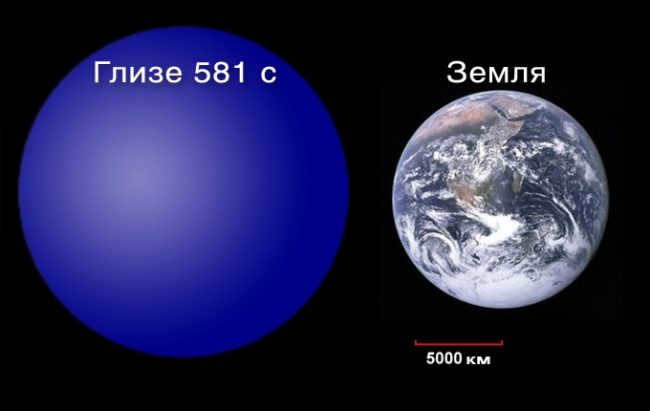
Comparison of Gliese 581C and Earth
Gliese 581C is a red dwarf star (M3V) with a visual magnitude of 10.56-10.58 and a distance of 20.3 light-years from us. It is the 89th closest star to our solar system and has a mass of about one-third of our sun and emits only 0.2% of its visual luminosity. Gliese 581C is located 2 degrees north of Beta Libra.
Gliese 581C belongs to the BY Dragon type of variable stars, which are main sequence K or M class stars that exhibit variations in luminosity due to rotation and the presence of starspots. This star system has a total of 3-6 planets, with the first one being discovered in April 2007. However, Gliese 581C is situated too close to its star and may have a similar environment to Venus. On the other hand, Gliese 581D is located in the habitable zone or possibly beyond it, making it a potential candidate for supporting life. The least massive planet in this system is Gliese 581E, which was discovered in April 2009.
In September 2010, astronomers made a remarkable discovery – they detected yet another planet in our vast universe. If further research confirms its existence, this newfound planet could potentially be the most ideal candidate for supporting liquid water. The reason for this lies in its positioning within what is known as the habitable zone, a region where conditions are just right for the presence of water in liquid form. Moving forward to November 2012, the European Space Agency made another fascinating revelation. They stumbled upon a belt of comets that stretches throughout space, boasting a staggering number of comets – 10 times greater than the total number found in our own solar system. This incredible find sheds light on the vastness and diversity of our cosmic neighborhood.
23 Libra
A yellow dwarf (G5 V) with a visual magnitude of 6.45 and a distance of 85 light-years, 23 Libra is home to two planets discovered in 1999 and 2009. This star, which is much older than the Sun, has an age range of 8.4-11.1 billion years and a mass 107% that of the Sun, with a radius 125% larger.
HD 141937
HD 141937 is a yellow dwarf (G2/G3 V) that houses a gas giant planet discovered in 2001. Similar in mass to the Sun, this star has a radius 1.06 times greater than that of the Sun. With an apparent visual magnitude of 7.25 and a distance of 109 light-years, HD 141937 is a fascinating celestial body.
Gliese 570
Gliese 570 is a stellar system situated 19 light-years away. It can be found in the southwestern region of the constellation, specifically southwest of Alpha Libra and northwest of Sigma Libra.
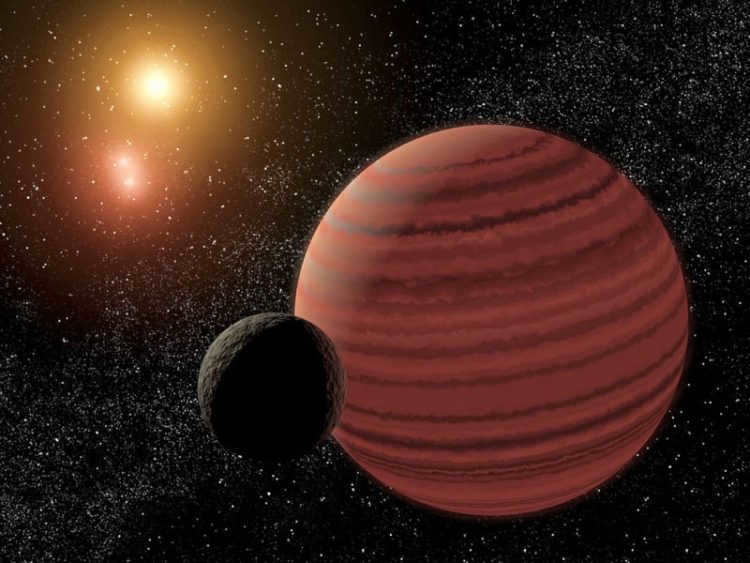
In the artist’s depiction, Gliese 570 appears as a complex system with an internal structure. Its two components, B and C, revolve around a common center of mass. The distance between these stars is relatively small, approximately 0.79 astronomical units, resulting in a revolution that takes 309 days.
Located 190 astronomical units away from the pair, the main component of this system is the star Gliese 570A. Consequently, the rotation of components B and C, in relation to star A, equates to approximately 2130 years. All the components in this quadruple system, including the unremarkable D, are classified as old stars within the galactic disk.
Fascinating things to observe
1. The mesmerizing globular star cluster NGC 5897
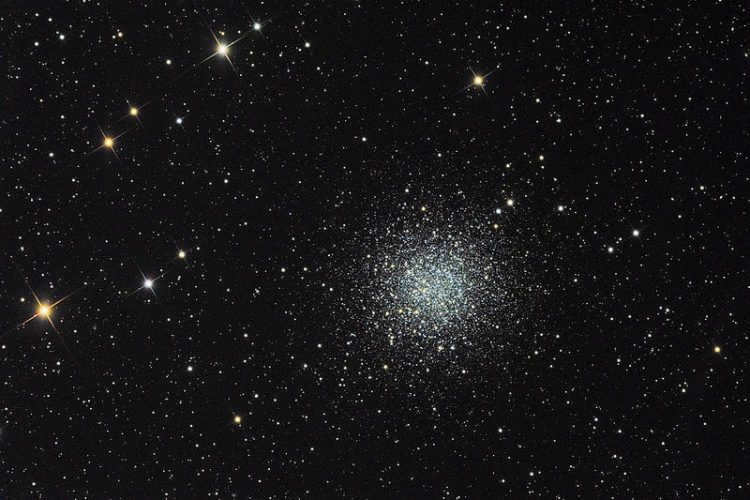
NGC 5897 is a massive globular star cluster with an unconventional spherical form. It has a magnitude of approximately 8.6 m and an apparent size of 11.0′.
When observed through high-quality astronomical binoculars, NGC 5897 appears as a hazy patch without any notable characteristics. However, when viewed through amateur telescopes, it is possible to discern several luminous and independent stars.
2. NGC 5885: A Fascinating Spiral Galaxy
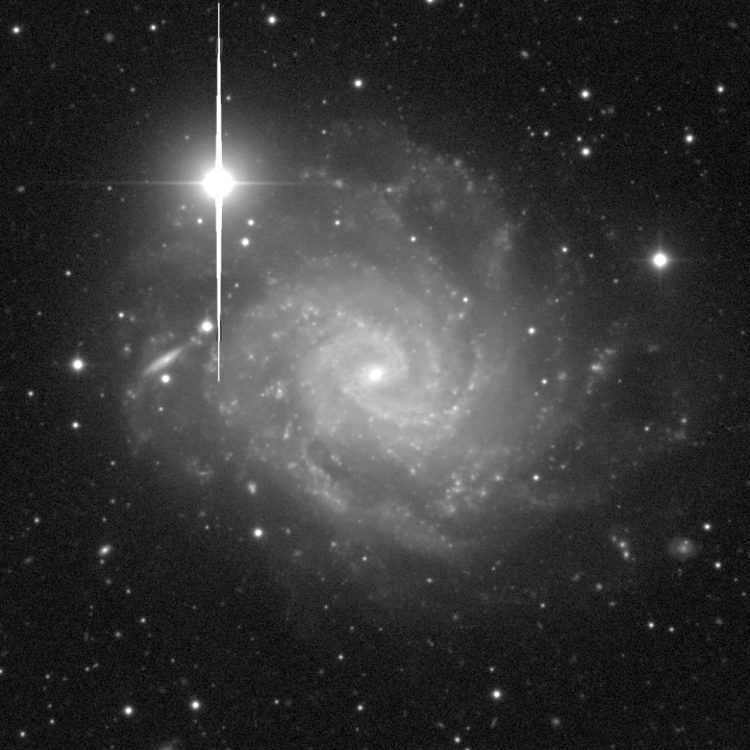
The NGC 5885 is categorized as a spiral galaxy with a low brightness level of 11.8 m. When observing it through a semi-professional telescope with a lens diameter of 150 millimeters or more, it appears as a small, blurred bright area. However, with a larger aperture of 200 millimeters, it becomes possible to identify distinct regions and, under optimal weather conditions, even detect the galaxy’s arms.
To locate NGC 5885, one can start by locating the star Zuben Elshemali and then move towards one of the fainter stars in that direction. By adjusting the position based on the chosen star, one can easily find the NGC 5885 galaxy.
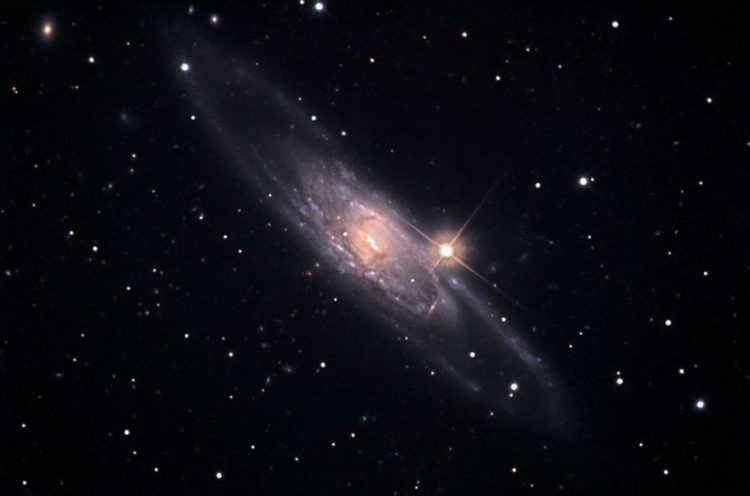
This spiral galaxy has a junction and is positioned at an angle, giving it a resemblance to the renowned Andromeda galaxy M31.
NGC 5792 is situated at a distance of 83 million light years. It has an apparent brightness of 11.3m and a surface brightness of 13.8m. To observe it, it is advisable to use a telescope with an aperture of 200mm or greater.
4. NGC 5890 Galaxy
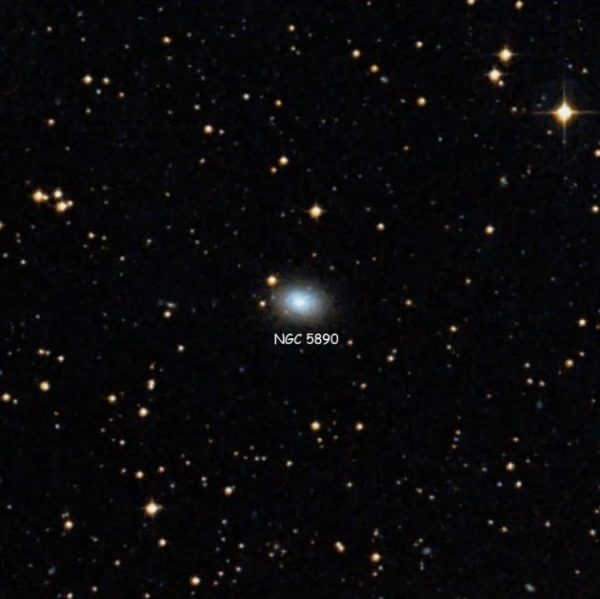
This particular celestial object is known as a lenticular galaxy. It has a visual magnitude of 12.8m and a surface brightness of 13.0m. While it can be observed using larger amateur telescopes, it may not be visible through smaller ones.
Locating a constellation in the celestial sphere
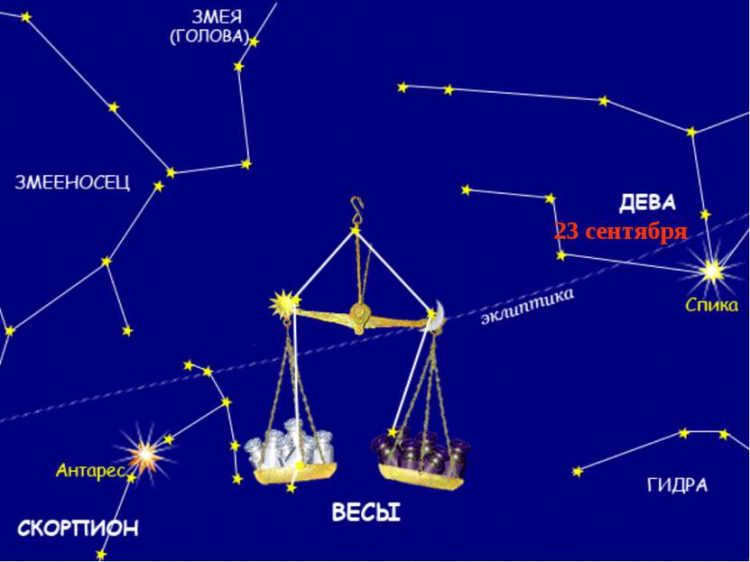
Locating the Libra constellation in the night sky is a relatively easy task. It forms a distinctive rhomboid shape, which is made up of its four brightest stars. These stars are not positioned high above the horizon as they are located in the southern hemisphere. Observing this constellation is most favorable during the months of April to May. In the southern and central regions of Russia, the Libra constellation can be fully seen.
Regarding the Sun’s position, it is in the Libra constellation from the end of October (October 31) to the twentieth of November (November 22). Additionally, Libra’s closest neighboring constellations are the Serpens, the Serpentine, and Lupus, the Wolf.
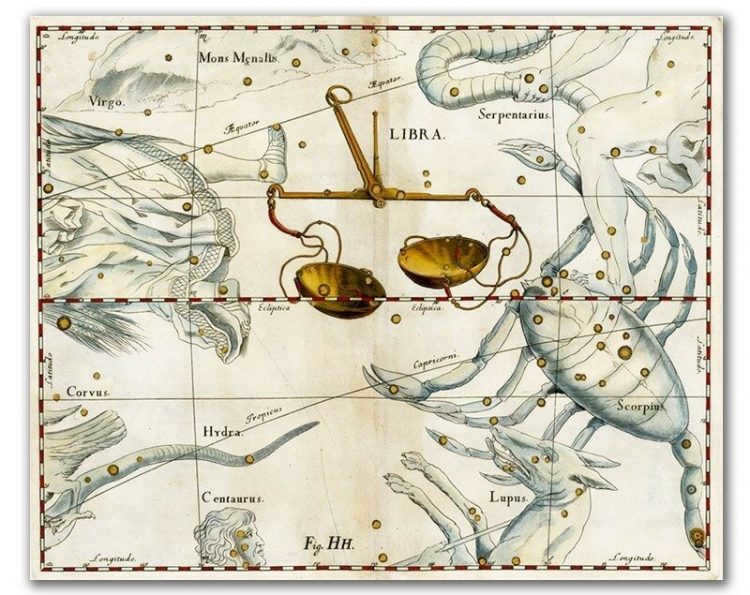
The legend of ancient Greece tells the tale of Libra in the following way. Many years ago, when the laws of the galaxy and the Earth were under the rule of Zeus, the mighty Mount Olympus was his home. Zeus was a strict and unforgiving ruler, and he chose his goddess wife Themis to be in charge of justice. Themis would organize gatherings at the cosmic table and arrange meetings for the people on Earth. Upholding the laws was Themis’ main responsibility.
During the era of universal time, Zeus and Themis were blessed with a daughter named Dike. As she matured, Dike was given the important task of traversing the Earth with her scales, meticulously measuring the actions and thoughts of humanity. Dike dutifully journeyed across the planet, ensuring impartial judgment by blindfolding herself. Upon her return to her father Zeus, she would relay the injustices she had witnessed on Earth. In response, Zeus would administer harsh punishments to those who failed to adhere to his established laws. As a reminder to humanity of the importance of upholding these laws, Dike’s scales of universal justice were left in the sky, forever serving as a symbol of the necessity for strict compliance.
Astrology
Individuals born between September 23 and October 22 fall under the astrological influence of the Libra constellation. However, it is important to note that the Libra sign should not be confused with the Libra constellation, which is occupied by the Sun from October 31 to November 22. Libra is an Air sign and its patron planets are Venus and Saturn.
Starry sky – refers to the collection of stars visible in the night sky. Under favorable conditions, the naked eye can see approximately 2.5 thousand stars up to the 6th magnitude [1].
Most of these stars are located near the Milky Way band (Fig. 1). By using a telescope, a much larger number of stars can be observed (refer to Table 1).
Table 1. Number of stars in the starry sky
Number of stars up to a certain brightness level
magnitude
The count of stars up to a specific brightness level.
The relative positioning of stars in the celestial sphere changes at an exceptionally slow pace. Absent precise measurements, no discernible alterations in the arrangement of stars in the sky can be observed over many hundreds of years, and for most stars – even thousands of years. This fact facilitates effortless navigation among thousands of stars, despite their seemingly random distribution.
Constellations have historically been used for celestial navigation and orientation in the night sky. These groups of bright stars are often given names that reflect their appearance or cultural significance. Some constellations are named after animals, such as the Big Dipper, Lion, and Dragon. Others are named after characters from Greek mythology, like Cassiopeia, Andromeda, and Perseus. There are also constellations named after objects that resemble the shapes formed by the stars in the group, such as the Northern Crown, Triangle, Arrow, and Libra.
Nevertheless, in 1922, the configuration of the constellations, which had been defined by ancient astronomers and depicted as meandering lines, underwent alterations. Some expansive constellations were subdivided into multiple distinct constellations, and the concept of constellations evolved to encompass not just clusters of prominent stars, but also regions of the celestial sphere. Presently, the entire expanse of the sky is conventionally partitioned into 88 discrete areas, each representing a constellation. These boundaries were officially established in 1930 by the International Astronomical Union.
Astrological Signs
The astrological signs, also known as the zodiac, consist of a circle of 12 constellations: Aries, Taurus, Gemini, Cancer, Leo, Virgo, Libra, Scorpio, Sagittarius, Capricorn, Aquarius, and Pisces. These constellations are located along the visible annual path of the Sun in the sky, known as the ecliptic. The term “zodiac” comes from the Greek word “z?diak?s,” which means “animal,” as most of the constellations in the zodiac were named after animals in ancient times. Not only do the zodiac constellations mark the Sun’s path, but they also serve as a guide for the visible path of the planets in our solar system and the Moon.
In ancient Greece, the zodiacal constellations were grouped together and each one was assigned its own sign. The corresponding constellations were also identified, including the constellations Aries, Libra, Cancer, and Capricorn, which marked the points of the spring and autumn equinoxes, as well as the summer and winter solstices. However, over the past 2,000 years, these points have shifted due to precession, causing the zodiacal signs to now be located in different constellations. As a result, the Sun enters a particular zodiac sign two to five weeks earlier than it reaches the constellation with the same name (see Table 2).
However, the ancient Greek designations for constellations have been preserved. The names have also endured, such as the Tropic of Cancer (Northern Tropic) and the Tropic of Capricorn (Southern Tropic), which corresponded to the summer and winter solstices in that time period. Only the constellations of Scorpio and Sagittarius can be seen in the southern regions of Russia, while the rest are visible throughout the entire country.
Table 2. Dates of the Sun’s entry into the boundaries of constellations and in the signs of the zodiac of the same name
September 23
Note: The table is for the year 1994. In other years, these dates may vary by one or two days.
A concise overview of the constellations of the zodiac
Gemini The two most dazzling stars in Gemini, Castor (1.58m, binary, white) and Pollux (1.16m, orange), are named after the twins from Greek and Roman mythology. Notable variable stars in this constellation include Eta Gemini (m=3.1, dm=0.8, consisting of two stars with different spectra that periodically eclipse each other) and Zeta Gemini. Kappa and Mu Gemini are examples of double stars found in this constellation. Additionally, Gemini is home to the scattered star cluster NGC 2168 and the planetary nebula NGC2392.
Cancer Representing a crab that was crushed by Hercules’ foot during his battle with Hydra, Cancer is a constellation steeped in mythological lore. None of the stars in this constellation surpasses 4th magnitude, although the star cluster Crèche (3.1m) located at the center of Cancer can be observed with the naked eye. Zeta Cancer is a multiple star system consisting of three stars: A (m=5.7, yellow), B (m=6.0, white, spectrally double), and C (m=7.8). Iota Cancer is another example of a double star in this constellation.
Leo (Leo). The shape made by the most brilliant stars of this large and striking constellation remotely resembles the profile of a lion. The group of stars corresponding to the lion’s head is called the Sickle. There are ten stars brighter than 4th magnitude, the most luminous of which are Regulus (1.36m, variable, blue, double) and Denebola (2.14m, variable, white). Binary stars: Gamma Lion (A: m=2.6, orange; B: m=3.8, yellow) and Iota Lion. The constellation Leo contains numerous galaxies, including five listed in the Messier catalog (M65, M66, M95, M96, and M105).
Virgo (Virgo) is a constellation in the sky that is the second largest. It is known for its bright stars, including Spica (0.98m, which varies in brightness and is blue) and Windemiatrix (2.85m, which is yellow). Additionally, there are seven stars in the constellation that are brighter than the 4th magnitude. Virgo also contains a cluster of galaxies that are relatively close. In fact, there are eleven of the brightest galaxies within Virgo that are listed in the Messier Catalog.
Libra (Libra) Originally, the stars of this constellation belonged to Scorpius, which comes after Libra in the Zodiac. The Libra constellation is not very visible, with only five of its stars being brighter than 4th magnitude. The brightest stars are Zuben el Shemali (2.61m, blue variable) and Zouben el Genoubi (2.75m, white variable).
Scorpius is a large and bright constellation located in the southern part of the zodiac. The brightest star in the constellation is Antares (1.0m, red cusp, double with a bluish companion). There are 16 other stars in the constellation that are brighter than 4th magnitude. The star clusters in Scorpius include M4, M7, M16, and M80.
Sagittarius (Sagittarius). The constellation Sagittarius is located in the southernmost part of the zodiac. Behind the star clouds of Sagittarius lies the center of our Galaxy, also known as the Milky Way. This constellation is particularly large and is home to numerous bright stars, with 14 of them shining brighter than the 4th magnitude. Additionally, Sagittarius contains a wealth of star clusters and diffuse nebulae. In fact, it boasts the highest number of objects in the Messier Catalog assigned to any constellation, with a total of 15. Some notable examples include the Lagoon Nebula (M8), the Triple Divided Nebula (M20), the Omega Nebula (M17), and the third brightest globular cluster in the sky, M22. Furthermore, the naked eye can spot the diffuse star cluster M7, which consists of over 100 stars.
Capricorn (Capricornus) The most luminous stars in this constellation are Deneb Algedi (2.85m, white) and Dabi (3.05m, white). The NZS M30 is located near Xi Capricorn.
Aquarius Aquarius is one of the largest constellations. The brightest stars are Sadalmelik (2.95m, yellow) and Sadalsuud (2.9m, yellow). Double stars include Zeta (A: m=4.4; B: m=4.6; physical pair, yellowish) and Beta Aquarius. NGC 7089, NGC7009 (“Saturn”) NGC7293 (“Helix”) nebulae.
Pisces A large but faint zodiacal constellation. Only three bright stars with a magnitude of 4th. The main star is Alrisha (3.82m, spectral double, physical pair, bluish).
Libra (also known as the Latin Libra) is a constellation that belongs to the zodiac. . With a visual stellar magnitude of 2.6, it boasts the brightest star in its region. This constellation is visible during the late winter, spring, and early summer months, but the optimal time to observe it is in the evenings of spring. For the best visibility, it is recommended to look for Libra in April – May. It can be seen in the central and southern parts of Russia. Libra is home to a renowned variable star that undergoes eclipses, making it a subject of extensive study. Observers on Earth can witness how its brilliance fluctuates.
To locate the constellation Libra, one can look towards the southeast, near the horizon. Its most prominent star, Kiffa (also known as a), forms an equilateral triangle with Spica (a star in Virgo) and Arcturus (a star in Boötes), making it easy to spot this constellation.
Within its vicinity lie the constellations of Serpent, Scorpio, Wolf, Virgo, and Snake (Fig.2). When observed with the unaided eye, approximately 50 stars become visible. Among them, six shine with a brilliance surpassing that of a fourth magnitude star. The quartet of brightest stars align to create a rhomboid, the distinctive geometric shape associated with this particular constellation.
Essential astronomical data regarding the Libra constellation
Within the compact Libra constellation (Fig.2), there are two noteworthy celestial objects. The initial one is the star a, which is the second brightest star in this constellation, following b. Even when observed through binoculars, it becomes apparent that the primary hot blue star, 2 m,8, possesses a companion star of 5.3 magnitude with a yellowish hue at a considerable separation of 5 minutes of arc. While both stars exhibit similar proper motions, the significant distance between the two components raises doubts regarding their physical association.
The d Libra star is a well-studied variable star that undergoes eclipses. There are interesting facts to be noted about this star. Both components of the star are almost the same size, with radii measuring 2.4 and 2.5 million kilometers. However, the smaller component is a hot blue giant, weighing 2.7 times more than the Sun, while the larger component is a yellow giant similar to Capella, but weighing only 1.2 times more than the Sun. The centers of these stars are separated by an average distance of only 8.6 million kilometers and they have an orbital period of 2.33 days. Observers on Earth occasionally witness the d Libra star’s luminosity fade from 4 m,8 to 5 m,9. Additionally, due to the yellow star having less luminosity than the blue star, a secondary minimum with a depth of about 0 m,1 is also observed.
Table 3 presents a summary of the data, including the constellation’s Russian and Latin names, the genitive case ending, the short three-letter designation, and additional information:
N1, N2, N3 represent the number of stars that are not fainter than 4, 5, and 6.5 stars, respectively.
S denotes the area of the constellation in square degrees.
aW and aE indicate the right ascension (at epoch 1875.0) of the westernmost and easternmost boundaries of the constellation in degrees.
dS and dN represent the declination (at epoch 1875.0) of the southernmost and northernmost boundaries of the constellation in degrees.
For the Little Bear, it is conventionally accepted that dN = +90 o , and for Octanthus, dS = -90 o .
Z indicates the zodiacal sign of the constellation.
Table 3: Concise information regarding the constellation Libra
Origins and historical background of the constellation Libra
Unlike other zodiacal constellations, the name of the constellation Libra does not stem from any living entities. The constellation Libra has been recognized by humanity since ancient times. Over two millennia ago, the ancient Egyptians observed that the point of the autumn equinox fell within the region of the Libra constellation.
During its trajectory across the celestial sphere, the Sun would align with this particular point on September 23, resulting in equal lengths for both day and night. This balance is the underlying reason behind the designation of the Libra constellation. Regarding the Libra constellation, in present times, the Sun is situated within it during October, while the point of the autumnal equinox has shifted to the Virgo constellation over the past 2000 years.
Furthermore, this particular constellation was linked to the yearly agricultural tasks. When the Sun resided in the vicinity of the Libra constellation, the ancient Egyptians would complete their reaping and threshing. However, before storing the harvested crops in their barns, they would meticulously weigh the wheat. The Egyptians discovered the correlation between the constellation and the act of weighing their own crops. The Roman poet Virgil documented this phenomenon in the 1st century BC, stating: “When Libra balances the hours of daylight and darkness and evenly divides light and darkness, then, farmers, bring your oxen out to the field.”
In ancient times, the stars a and b of Libra were referred to as Kiffa australis and Kiffa borealis, respectively (a combination of Latin and Arabic), signifying – the southern cup (of Libra) and the northern cup.
The constellation in Ancient Greek mythology
The ancient Greeks connected the constellation Libra with the myth of the world’s creation. The powerful goddess Earth brought forth the boundless azure sky – Uranus. As the sky stretched across the Earth, Uranus ruled over the universe. From his union with the Earth, the titans were born: Ocean, encircling the Earth, Kei, Krii, Hylerion, Iapetus, and Kronos. Alongside the titans, Gaia-Earth also gave birth to three Cyclopes with a single eye and three colossal giants with one hundred arms and fifty heads – hecatonheires. However, Uranus despised his gigantic offspring and imprisoned them in the gloomy depths of the Earth. The cries of the suffering children caused anguish to Gaea-Earth. She summoned her Titan children and urged them to revolt against their father Uranus. Yet, the Titans were hesitant to raise a hand against their own father. Only the youngest among them, the titan Kronos, cunningly dethroned his father and seized power. As a punishment to Kronos, the goddess Nykta gave birth to numerous dreadful deities: the goddess of strife Erida, the goddess of deception Apata, the god of death Thanatos, the goddess of vengeance Nemesis, and many other equally malevolent gods and goddesses.
In the world governed by Kronos, turmoil, death, falsehood, terror, and agony were brought upon. Zeus, the son of Cronus, rebelled against his father, initiating a battle with Cronus and the Titans to gain control over the world. Many Titans, who were dissatisfied with Cronus’ reign, joined Zeus’ side. Eventually, Zeus’ adversaries trembled and were vanquished. He imprisoned them and banished them to the dark abyss of Tartarus. With Zeus’ triumph over Cronus, the era of anarchy came to an end as he established order on earth. He shared dominion over the world with his siblings, granting Poseidon authority over the sea, Hades rulership of the underworld, and reserving the sky for himself. Encircled by a multitude of gods, Zeus sits on a throne in a magnificent golden palace atop Mount Olympus.
Zeus, the ruler of Olympus, oversees the affairs of mortals and establishes equitable laws on the earthly plane. Severe consequences await those who dare to defy the order set forth by Zeus. A blanket of dark clouds will obscure the sky, thunder will resonate, and a brilliant bolt of lightning will strike the transgressor. Standing by the throne of Zeus is the goddess Themis, the guardian of laws and a titanid who is Zeus’ second wife. She embodies the principles of justice and lawful conduct. By Zeus’ decree, Themis convenes gatherings of the divine on Mount Olympus and ensures that neither in the heavens nor on Earth are the laws violated. Even after her divorce from Zeus, Themis remains seated on her throne as a wise advisor. Her daughters, Eunomia, the personification of Lawfulness, Dike, the embodiment of Justice, and Eirene, the symbol of Peace, assist her in her duties. Themis closely watches over the lives of humanity and promptly reports any injustices to Zeus. Occasionally, she descends to Earth, holding a set of magical scales in her hand. These scales possess the extraordinary ability to accurately measure the righteous and wrongful actions of individuals.
When it comes to breaking the law, Themis emerges as a fearsome punisher. In her alternate hand, she wields a sword, using it to penetrate the hearts of the unjust. Zeus transformed the scales of Themis into a constellation and positioned them in the heavens as a reminder that it is crucial to faithfully abide by the law and let justice guide our actions.
Libra in astrology
Despite the symbol of the zodiac sign being Libra, individuals with a Libra personality cannot be considered balanced. While they may eventually reach a state of equilibrium and calmness, Libras tend to oscillate from one side to another for a long time. Many individuals born under this sign exhibit strong moral principles and often become great moralists. They excel in mediation and diplomacy, and their desire for justice often leads them to pursue careers as lawyers or preachers.
Libras are generally very pleasant individuals. They initiate friendly conversations and always manage to find something sympathetic to themselves in the position of their interlocutor. It is challenging to argue with them as they can always find counterarguments for every point.
At their worst, Libras may have a tendency to be duplicitous. However, when used for good purposes, these traits can bring them fame and respect.
Typically, individuals born under the sign of Libra possess deep and multifaceted personalities. Some notable Libras include Mahatma Gandhi, Graham Grim, Lermontov, Marina Tsvetaeva, Ivan Bunin, Alexander Galich, and Margaret Thatcher.
For a comprehensive analysis of the zodiac sign, ruling planet, and the most detailed description of a name, refer to the resource that provides a comprehensive list of both male and female names.
Hubble telescope captures stunning images
Back in 1999, American astronomers utilized the remarkable capabilities of the Hubble telescope to capture a mesmerizing image of a distant planet. The Hubble telescope successfully snapped a breathtaking photo of the star HD 141569, which resides in the Libra constellation and is located a staggering 320 light years away from our solar system. This remarkable image, taken in the near-infrared spectrum, is particularly fascinating due to the presence of a colossal disk enveloping the star, spanning an astounding 75 billion miles (equivalent to 120 * 10 9 km) in width. A striking dark band serves as a distinct separation between the luminous inner region and the more dimly lit outer region of the disk. Astonishingly, the surface structure of this disk bears a striking resemblance to the largest gap observed in Saturn’s rings, albeit on a vastly grander scale. Adding to the intrigue, the photo also reveals the presence of dark radial stripes, possibly indicating that an unseen planet has exerted its gravitational pull and shaped a track measuring 3.7 billion miles (equivalent to 6 * 10 9 km) in width.
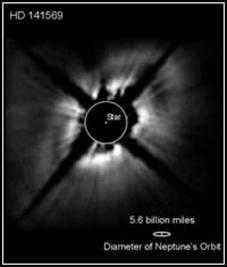
Research suggests that a planet may have caused the gap in the stellar dust disk
An impressive image taken by the NASA Hubble Space Telescope in the near-infrared range reveals a disk surrounding the star HD 141569, which is located approximately 320 light-years away in the Libra constellation. The Hubble image shows that the disk, which measures 75 billion miles in width, appears to be divided into two sections: a dark band separates a brighter inner region from a fainter outer region. This structure bears a striking resemblance to the largest gap found in Saturn’s rings, but on a much larger scale.
A group of astronomers utilizing the Hubble telescope are filled with excitement after discovering a mysterious dark gap in a massive ring of dust surrounding a young, fully-formed star. It is speculated that this gap, which spans an astonishing 3.7 billion miles, may have been carved out by an unseen planet through gravitational forces. This gap resembles a wide groove found on a vinyl record.
The star in question, HD 141569, is located approximately 320 light-years away in the constellation of Libra. Upon closer examination with the Hubble telescope, it becomes apparent that the dust disk surrounding HD 141569 is divided into two distinct parts. There is a bright inner region that is clearly separated from a fainter outer region by a dark band. This arrangement bears a striking resemblance to the largest gap found in Saturn’s rings.
Credit for the image goes to Alycia Weinberger, Eric Becklin (UCLA), Glenn Schneider (University of Arizona), and NASA.
This information was published on January 8, 1999, and is documented in the bibliography:
1. Alexandrovich N. Fundamentals of Astronomy.
- Bakulin P. A., Kononovich E. V., Moroz V. I. General Astronomy Course.
- Encyclopedia of Bolshaya Sovetskaya.
- Dagaev “Observations of the starry sky”. Moscow “Nauka”, 1983.
- Siegel F.Yu. Treasures of the starry sky: A Guide to constellations and the Moon. – Moscow: Nauka, 1980.
- Cosmic objects observed with the Hubble telescope.
[1] Stellar magnitude (apparent) is a measurement of the brightness produced by a celestial luminary (such as a star, planet, or sun) on Earth, on a plane perpendicular to the incident rays. It is also a measure of the luminosity of a celestial luminary. Typically, the values of Sv. are adjusted to account for the attenuation of light in the Earth’s atmosphere, making them extraatmospheric. The concept of Sv. was first introduced by Hipparchus in the 2nd century B.C., when he classified all stars visible to the naked eye into six magnitudes. The brightest stars were assigned to the 1st magnitude, while the faintest stars accessible to the naked eye were classified as 6th magnitude.
[2] The Earth’s axis undergoes a slow cone-like motion due to the gravitational influence of the Moon and Sun. This motion, known as precession or precession of the equinox, causes the vernal equinox point to gradually shift westward along the ecliptic. Over the past few millennia, the vernal equinox has moved from the constellation of Taurus, through Aries, and into Pisces. As a result, the entire zodiacal series of constellations appears to have shifted by two positions, with the counting traditionally beginning from the constellation where the vernal equinox point is located.
starry sky – The starry sky refers to the collection of celestial bodies that are visible at night in the firmament. Under favorable conditions, the naked eye can observe approximately 2.5 thousand stars up to the 6th magnitude across half of the night sky [1].
Most of the stars are situated in close proximity to the Milky Way belt (Figure 1). By utilizing a telescope, we are able to observe a significantly larger quantity of stars (refer to Table 1).
Table 1. Quantity of stars in the celestial sky
Quantity of stars up to a designated stellar magnitude
magnitude
Quantity of stars up to a designated stellar magnitude
The relative arrangement of stars in the sky changes at an exceedingly gradual pace. Without precise measurements, it is impossible to detect any noticeable shifts in the positioning of stars in the sky over the course of hundreds, and for the majority of stars – thousands of years. This last factor permits easy navigation among thousands of stars, despite their apparent sporadic distribution.
In order to navigate the night sky, astronomers have historically grouped bright stars into constellations. These constellations were named after animals (such as the Big Dipper, Lion, and Dragon), Greek mythological heroes (like Cassiopeia, Andromeda, and Perseus), or simply after objects that resembled the shapes formed by the stars in the group (such as the Northern Crown, Triangle, Arrow, and Libra).
Starting from the 17th century, constellations began to have their individual stars labeled with letters from the Greek alphabet. Later on, numerical numbering was introduced, which is now mainly used for dimmer stars. Moreover, the brighter stars (around 130) were given their own unique names. For instance, the brightest star in the constellation Canis Major is named Sirius, the brightest star in the constellation Auriga is named Capella, the brightest star in the constellation Lyra is named Vega, the brightest star in the constellation Orion is named Betelgeuse, the second brightest star in the constellation Orion is named Rigel, and the second brightest star in the constellation Perseus is named Algol. These names and designations of stars are still in use today.
Zodiac
The zodiac, also known as the zodiacal circle (derived from the Greek word z?diak?s, meaning “animal”), consists of the 12 constellations (Aries, Taurus, Gemini, Cancer, Leo, Virgo, Libra, Scorpio, Sagittarius, Capricorn, Aquarius, Pisces) that are positioned along the visible annual path of the Sun among the stars, known as the ecliptic. The term “Zodiac” originated from the fact that many of these constellations have been named after animals since ancient times. Additionally, the zodiacal constellations serve as the pathway for the visible movement of the planets in our solar system and the Moon.
In ancient Greece, specific constellations were identified as part of the zodiac and each constellation was associated with its own sign….. The signs of these constellations were also used to mark the spring equinox (Aries constellation), autumn equinox (Libra), and the summer (Cancer) and winter (Capricorn) solstices. However, over the past 2 thousand years, due to precession [2], these points have shifted from their original constellations. The zodiac signs are now found in different constellations. As a result, the Sun enters a specific zodiac sign two to five weeks earlier than it reaches the corresponding constellation (refer to Table 2).
However, the ancient Greek designations for constellations have been preserved, along with their names. The Tropic of Cancer (Northern Tropic) and the Tropic of Capricorn (Southern Tropic) still correspond to the summer and winter solstices in that era. Only the constellations of Scorpio and Sagittarius can be seen in the southern regions of Russia, while the rest are visible throughout the country.
Table 2. Dates of the Sun’s entry into the boundaries of constellations and in the signs of the zodiac of the same name
September 23
Note: The table is compiled for 1994. In other years, these dates may differ by one or two days.
Overview of the characteristics of zodiac constellations
Aries is a small constellation in the zodiac, representing the golden fleece sought by Jason in mythology. The constellation is known for its brightest stars, such as Gamal (2m, variable, orange), Sheratan (2.64m, variable, white), and Mezartim (3.88m, double, white).
Taurus is another notable zodiacal constellation, associated with the head of a bull. The brightest star in Taurus is Aldebaran (0.87m), which is surrounded by the Hyades star cluster, although it does not belong to it. Another beautiful star cluster in Taurus is The Pleiades. The constellation boasts a total of fourteen stars brighter than 4th magnitude. There are also several optical double stars in Taurus, including Theta, Delta, and Kappa. Other notable celestial objects in Taurus include the Cepheid SZ Tau and the eclipsing variable star Lambda Taurus. Moreover, Taurus is home to the Crab Nebula, which is the remnant of a supernova that exploded in 1054. The nebula’s center features a star with a magnitude of 16.5.
Cancer is a constellation in mythology that resembles a crab being crushed by Hercules’ foot while battling Hydra. The stars in this constellation do not exceed a magnitude of 4, but the star cluster Crèche (3.1m) located in the center of the constellation is visible to the naked eye. Zeta Cancer is a multiple star system consisting of three components: A (magnitude 5.7, yellow), B (magnitude 6.0, hol, spectrally double), and C (magnitude 7.8). Iota Cancer is also a double star.
Leo (Leo). The pattern created by the most brilliant stars in this expansive and noticeable constellation remotely resembles the shape of a lion in side view. The group of stars that resembles the lion’s head is called the Sickle. There are ten stars that are brighter than the 4th magnitude, with the most brilliant being Regulus (1.36m, variable, blue, double) and Denebola (2.14m, variable, white). The double stars are Gamma Leo (A: m=2.6, orange; B: m=3.8, yellow) and Iota Leo. The Leo constellation is home to numerous galaxies, including five that are part of Messier’s catalog (M65, M66, M95, M96, and M105).
Virgo (Virgo) is a constellation in the sky that is known to be the second largest. It contains several bright stars, such as Spica (0.98m, which is variable and blue) and Windemiatrix (2.85m, which is yellow). Additionally, there are seven stars in the constellation that are brighter than 4th magnitude. Virgo also hosts a cluster of galaxies that are relatively close to us. The Messier Catalog lists eleven of the brightest galaxies that fall within the boundaries of Virgo.
Libra (Libra) The stars of this constellation were previously part of Scorpius, which comes after Libra in the Zodiac. Libra is not very visible compared to other constellations in the Zodiac, as only five of its stars have a brightness greater than 4th magnitude. The brightest stars in Libra are Zuben el Shemali (2.61m, blue, variable) and Zouben el Genoubi (2.75m, white, variable).
Scorpius is a large and bright constellation located in the southern part of the zodiac. The most prominent star in Scorpius is Antares (1.0m, red, double, companion bluish). There are 16 other stars in Scorpius that are brighter than 4th magnitude. Some notable star clusters in Scorpius include M4, M7, M16, and M80.
Sagittarius (Sagittarius). Located in the southern hemisphere, Sagittarius is the southernmost zodiacal constellation. The star clouds in Sagittarius conceal the center of our Galaxy, the Milky Way. This constellation is known for its abundance of bright stars, with 14 stars brighter than 4th magnitude. It is also home to numerous star clusters and diffuse nebulae, making it the most populated constellation in the Messier Catalog, with 15 objects assigned to it. Some notable objects in Sagittarius include the Lagoon Nebula (M8), the Triple Dividing Nebula (M20), the Omega Nebula (M17), and the globular cluster M22, which is the third brightest in the sky. Additionally, the naked eye can observe the diffuse star cluster M7, which contains over 100 stars.
Capricornus is another zodiacal constellation. Its brightest stars are Deneb Algedi (2.85m, white) and Dabi (3.05m, white). Near Xi Capricorn, you can find the NZS M30.
Aquarius Aquarius is a vast constellation that contains some of the brightest stars in the night sky. Two notable stars in Aquarius are Sadalmelik (with a magnitude of 2.95 and a yellow color) and Sadalsuud (with a magnitude of 2.9 and a yellow color). Aquarius also features a couple of double stars, such as Zeta Aquarius (with two components, A and B, having magnitudes of 4.4 and 4.6 respectively, and a yellowish color) and Beta Aquarius. Additionally, Aquarius is home to several notable nebulae, including NGC 7089, NGC 7009 (also known as the “Saturn” nebula), and NGC 7293 (also known as the “Helix” nebula).
Pisces Pisces is a large but relatively faint constellation in the zodiac. It is characterized by three bright stars, all of which have a magnitude of around 4. The primary star in Pisces is Alrisha (with a magnitude of 3.82), which is a spectral double and a physical pair. Alrisha has a bluish color.
Observing the Location of the Libra Constellation in the Night Sky
Libra, also known as Latin Libra, is a well-known zodiacal constellation. It boasts a bright star with a visual magnitude of 2.6. This constellation can be spotted during the late winter, spring, and early summer seasons, but it is particularly visible in the evenings of the spring months. The best time to observe Libra is in April and May, when visibility conditions are most favorable. It can be seen in the central and southern regions of Russia. Libra is home to a famous eclipsing variable star that has been extensively studied, and its brilliance can be observed changing by Earth-based observers.
To locate the Libra constellation, look towards the southeast near the horizon. Its brightest star, Kiffa (a), forms an equilateral triangle with Spica (a Virgo) and Arcturus (a Volopas), making it easy to find.
Located in the vicinity of the constellations Serpent, Scorpio, Wolf, Virgo, and Snake (Fig.2), there are approximately 50 stars visible in the Libra constellation to the naked eye. Among them, six stars have a magnitude brighter than the fourth. These four brightest stars form a rhomboid shape, which is a defining characteristic of the Libra constellation.
Essential astronomical details regarding the Libra constellation
Within the compact Libra constellation (Fig.2), two notable celestial objects capture attention. The first one is the star denoted as ‘a,’ which is the second brightest star in this constellation, following ‘b.’ Even with binoculars, it is clearly observable that the primary hot blue star, 2 m,8, has a distant (5 minutes of arc) yellowish companion with a magnitude of 5.3. While both stars exhibit similar proper motions, the considerable separation between them raises doubts about their physical relationship.
The d Libra star is a well-studied variable star that undergoes eclipses. It possesses interesting characteristics worth mentioning. Both stars are nearly identical in size, with radii measuring 2.4 and 2.5 million kilometers respectively. However, the smaller star is a hot blue giant, weighing 2.7 times more than the Sun, while the larger star is a yellow giant resembling Capella, but only 1.2 times more massive than the Sun. The stars have centers separated by an average distance of 8.6 million kilometers and orbit each other every 2.33 days. From the perspective of Earth observers, the luminosity of d Libra star occasionally diminishes from 4 m, 8 to 5 m, 9. Due to the yellow star having lower luminosity than the blue star, a secondary minimum with a depth of approximately 0 m, 1 can also be observed.
Table 3 includes the subsequent information: the constellation’s name in both Russian and Latin, the genitive case ending, the abbreviated three-letter designation, and the following supplementary details:
N1 ,N2 , N3 – the quantity of stars that are not dimmer than 4, 5, and 6.5 magnitudes, respectively.
S signifies the area of the constellation in square degrees.
a W and a E – denote the right ascension (at epoch 1875.0) of the westernmost and easternmost boundaries of the constellation, measured in degrees.
d S and d N – represent the declination (at epoch 1875.0) of the southernmost and northernmost boundaries of the constellation, measured in degrees.
For Ursa Minor, it is conventionally accepted that d N = +90 o , whereas for Octans, d S = -90 o .
Z denotes whether the constellation belongs to the zodiacal group.
Table 3: Concise information regarding the Libra constellation
Origin and Significance of the Libra Constellation Name
The Libra constellation stands out among the zodiac constellations as it is not named after any living beings. Humans have been aware of the Libra constellation since ancient times. Over two thousand years ago, the ancient Egyptians observed that the point of the autumn equinox fell within the boundaries of the Libra constellation.
During its journey across the celestial sphere, the Sun occupied this point on September 23, when the length of day and night were equal. This balance is the reason behind the naming of the Libra constellation. In modern times, the Sun is present in this constellation during October, while the autumnal equinox point has shifted to the Virgo constellation over the past 2000 years.
Moreover, this constellation was linked to the yearly agricultural labor. When the Sun resided in the area of Libra, the ancient Egyptians completed their reaping and threshing. However, prior to storing the harvested crops in their barns, they meticulously weighed the wheat. The Egyptians observed the correlation between the constellation and the act of weighing their own harvest. The Roman poet Virgil documented this in the 1st century BC, stating: “When Libra balances the hours of day and night, evenly dividing the light and darkness, then, farmers, lead your oxen out into the field.”
In ancient times, the a and b stars of Libra were referred to as Kiffa australis and Kiffa borealis (a combination of Latin and Arabic), respectively, which simply indicated – the southern cup (of Libra) and the northern cup.
The constellation in Ancient Greek mythology
The constellation Libra has long been connected by the ancient Greeks with the myth of the world’s creation. According to the legend, the powerful goddess Earth gave birth to the boundless expanse of the sky known as Uranus. Uranus then spread across the Earth, reigning over the entire world. From his union with Earth, the Titans were born: Oceanus, who encircles the entire Earth, Crius, Coeus, Hyperion, Iapetus, and Cronus. In addition to the Titans, Earth also gave birth to three Cyclopes with one eye each, and three colossal giants with one hundred arms and fifty heads, known as the Hecatoncheires. However, Uranus despised his own giant offspring and imprisoned them deep within the Earth. The agonized cries of the suffering children pained Earth greatly. In response, she called upon her Titan children to rise up against their father Uranus. Yet, the Titans were too fearful to challenge their own father. Only the youngest among them, the clever Titan Cronus, managed to overthrow Uranus and seize power. As a punishment for Cronus, the goddess Nyx gave birth to numerous dreadful deities, including the goddess of discord, Eris, the goddess of deceit, Apate, the god of death, Thanatos, the goddess of retribution, Nemesis, and many other equally malevolent gods and goddesses.
The world ruled by Kronos was plagued by conflict, death, deception, fear, and immense suffering. However, Kronos’ son Zeus rose up against his father and led a rebellion alongside his siblings, determined to overthrow Cronus and the Titans in order to claim power over the world. Many of the Titans, dissatisfied with Cronus’ tyrannical rule, chose to ally themselves with Zeus. Eventually, Zeus’ opponents quivered in fear as they were ultimately defeated. Zeus took it upon himself to bind them and cast them down into the gloomy depths of Tartarus, where they would be confined in perpetual darkness.
With Zeus’ triumph over Cronus, the era of lawlessness came to an end, and Zeus established a new order on earth. He shared dominion over the world with his brothers, granting Poseidon control over the seas and Hades dominion over the underworld, while reserving the sky for himself. Sitting atop Mount Olympus in a magnificent golden palace, Zeus now reigns as the supreme deity, surrounded by a multitude of gods and goddesses.
Zeus, the supreme ruler of Olympus, watches over the affairs of humans and establishes fair laws on earth. Any individual who dares to defy the order set by Zeus will face dire consequences. The sky will be enveloped in ominous black clouds, thunder will rumble, and a brilliant bolt of lightning will strike the head of the transgressor. Standing by the throne of Zeus, the mighty thunderer, is the titanid goddess Themis, his second wife and guardian of the laws. Themis is the embodiment of law and order, ensuring that no laws are breached in heaven or on earth by convening gatherings of the gods on Olympus at Zeus’s command. Even after her divorce from Zeus, Themis retained her position as a wise advisor on the throne. Assisting her in her duties are her daughters: Eunomia, representing Lawfulness, Dike, personifying Justice, and Eirene, the symbol of Peace. Themis vigilantly observes the lives of mortals and reports any injustices directly to Zeus. On occasion, she descends to the mortal realm, wielding a scale in her hand. These scales possess magical properties, accurately measuring the just and unjust deeds of individuals.
When it comes to breaking the law, Themis emerges as a fearsome punisher. In her alternate hand, she wields a sword that she uses to penetrate the hearts of the unjust. Zeus transformed Themis’ scales into a constellation and positioned them in the heavens as a reminder to humanity that it is crucial to abide by the law and let justice guide their conduct.
Astrological Sign of Libra
Despite being symbolized by the scales, individuals born under the zodiac sign of Libra are not always balanced. While they strive for equilibrium, Libras often find themselves wavering between extremes. Many Libras possess strong moral convictions, making them excellent mediators and diplomats. Their innate sense of justice often leads them to pursue careers in law or preaching.
Libras are generally affable individuals. They have a knack for initiating friendly conversations and can always find something relatable about their conversation partner. Engaging in a debate with a Libra can be challenging, as they have a knack for presenting counterarguments for every point made.
In their worst moments, Libras may exhibit a tendency towards duplicity. However, if used for good, these qualities can earn them fame and respect.
Typically, individuals born under the Libra zodiac sign are known for their depth and versatility. Some notable examples include Mahatma Gandhi and Graham Grim, M. Yu. Lermontov and Marina Tsvetaeva, Ivan Bunin and Alexander Galich, and Margaret Thatcher.
The complete characterization of a person’s name, zodiac, and ruling planet can be found in a comprehensive resource that lists both male and female names.
Hubble telescope captures stunning images
In 1999, astronomers from the United States utilized the incredible capabilities of the Hubble Telescope to capture a mesmerizing photograph of the star HD 141569, which resides in the Libra constellation. Situated approximately 320 light-years away from our solar system, this star is a true celestial marvel. The photograph, taken in the near-infrared spectrum, reveals a remarkable sight – a vast disk encompassing the star, spanning an impressive distance of 75 billion miles (120 * 10 9 km). What makes this image even more intriguing is the presence of a dark band that separates the bright inner region from the faintly luminous outer region of the disk. This surface structure bears a striking resemblance to the largest gap found in the magnificent rings of Saturn, albeit on a much grander scale. Additionally, upon closer examination, dark radial stripes can be observed within the photo. Scientists speculate that these stripes might be the result of an invisible planet’s gravitational forces, carving a massive track that spans a staggering 3.7 billion miles (6 * 10 9 km).

Planet Might Cleanse Dust Disk Gap
An impressive near-infrared image of a disk surrounding the HD 141569 star, situated approximately 320 light-years away in the Libra constellation, was captured by the NASA Hubble Space Telescope. The Hubble’s observations reveal that the disk, which is about 75 billion miles wide, appears to be divided into two sections: a dark strip separates a bright inner area from a dimmer outer area. This structure resembles the largest crevice in Saturn’s rings, but on a much grander scale.
A group of astronomers utilizing the Hubble telescope have made an exciting discovery – a dark gap in the massive dust disk surrounding a young, fully formed star. It is possible that an unseen planet has caused this gap, which measures a staggering 3.7 billion miles wide, resembling a groove on a phonograph record.
This star, named HD 141569, is located approximately 320 light-years away in the constellation Libra. The Hubble telescope has revealed that the disk surrounding HD 141569 is divided into two distinct parts: a bright inner region and a fainter outer region, separated by a dark band. This configuration bears a resemblance to the largest gap found in Saturn’s rings.
Credit for this discovery goes to Alycia Weinberger, Eric Becklin (UCLA), Glenn Schneider (University of Arizona), and NASA.
STScI-PRC99-03a, January 8, 1999.
Bibliography:
1. Alexandrovich N. Fundamentals of Astronomy.
- Astro-TOP.
- Bakulin P. A., Kononovich E. V., Moroz V. I. General Astronomy Course.
- Bolshaya Sovetskaya Encyclopedia.
- Dagaev “Observations of the starry sky”. Moscow “Nauka”, 1983.
- Siegel F.Yu. Treasures of the starry sky: Guide to constellations and the Moon. – Moscow: Nauka, 1980.
- Cosmic objects through the Hubble telescope.
[1] Stellar magnitude (apparent) refers to the level of brightness produced by a celestial object (such as a star, planet, or the Sun) as observed from Earth on a plane that is perpendicular to the incoming rays. It is a measurement of the luminosity of the celestial object. Typically, the values of apparent magnitude are adjusted to account for the light attenuation caused by Earth’s atmosphere, making them extraatmospheric. The concept of stellar magnitude was first introduced in the 2nd century B.C. by Hipparchus, who classified all stars visible to the naked eye into 6 magnitudes. The brightest stars were designated as 1st magnitude, while the faintest stars (those just visible to the naked eye) were classified as 6th magnitude.





